Interested in a trip to Namibia?
Here our 10 places to visit in Namibia: its desert landscapes, vast plains, and roads that stretch to infinity… Discover in this travel blog post our journey in Namibia and our itinerary in this magnificent African country.
Breathtaking landscapes, red-orange dunes, safaris, wild animals… Namibia has all the qualities of a postcard.
If you’re thinking of organizing a trip to Namibia, here are some ideas to prepare your road trip and what you should visit in Namibia. Personally, we left for 5 weeks plus 1 week towards Durban in South Africa, but this itinerary can be done in 3 weeks or by cutting/shortening some stages.
Trip in Namibia – Our itinerary:
It’s a route from South to North (as we arrived by car from South Africa); you may arrive by plane in Windhoek.
1. Orange River rafting descent
2. Ai-Ais / Fish River canyon
3. Luderitz’s sea air and Kolmanskop, the ghost town
4. The incredible red desert of Sossuvlei
5. Sesriem Canyon
6. Swakopmund and Walvis Bay
7. Spitzkoppe, the pointed hat
8. African Safari in Etosha
9. The North and the Caprivi Strip
10. Windhoek
Arriving in Johannesburg, we rented the smallest and cheapest rental car possible. We had no problems during these 5 weeks. However, it would have been more enjoyable with an SUV or even a 4×4.
1. Kayak descent of the Orange River
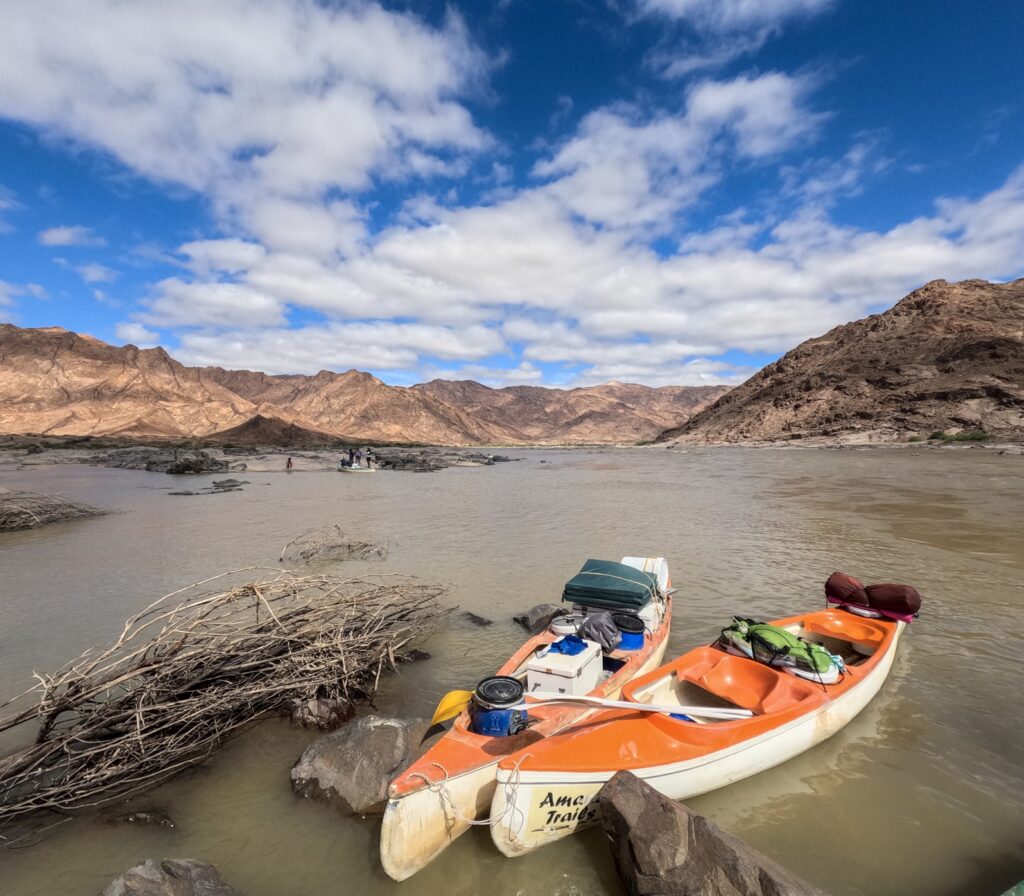
To be honest, this is part of our top 3 things to do in Namibia. But we understand that it might not appeal to everyone. Indeed, it’s sporty and rustic; it’s a 4-day / 3-night kayak descent on the Orange River, the river that forms part of the Southern border with South Africa.
We arrived there the evening before to meet and dine with the team with whom we would spend 4 days, and voila, the first camping evening. The next morning, we started the adventure.
During the day, it’s river and rapids descent by kayak (count between 3 to 5 hours per day), with a lunch break on a bank to eat and in the evening, meals and camping. Sometimes in South Africa, sometimes in Namibia… great!
The guides take care of the meals, and if you want to bring extra (snacks or drinks), it’s up to you to manage (there’s a cooler available per kayak)! Regarding camping, you bring your own gear (you can also rent it) in your kayak, so don’t plan anything too big! Except at the first base camp, there are no showers or toilets at the 3 camping spots on the adventure.
In the evening, music by the campfire, conversation under the stars, no electricity, no network… the dream!
Provider: Amanzy Trail (Namibian side), expect to pay around €250 per person for the entire trip (April 2023 4800R/pers.).
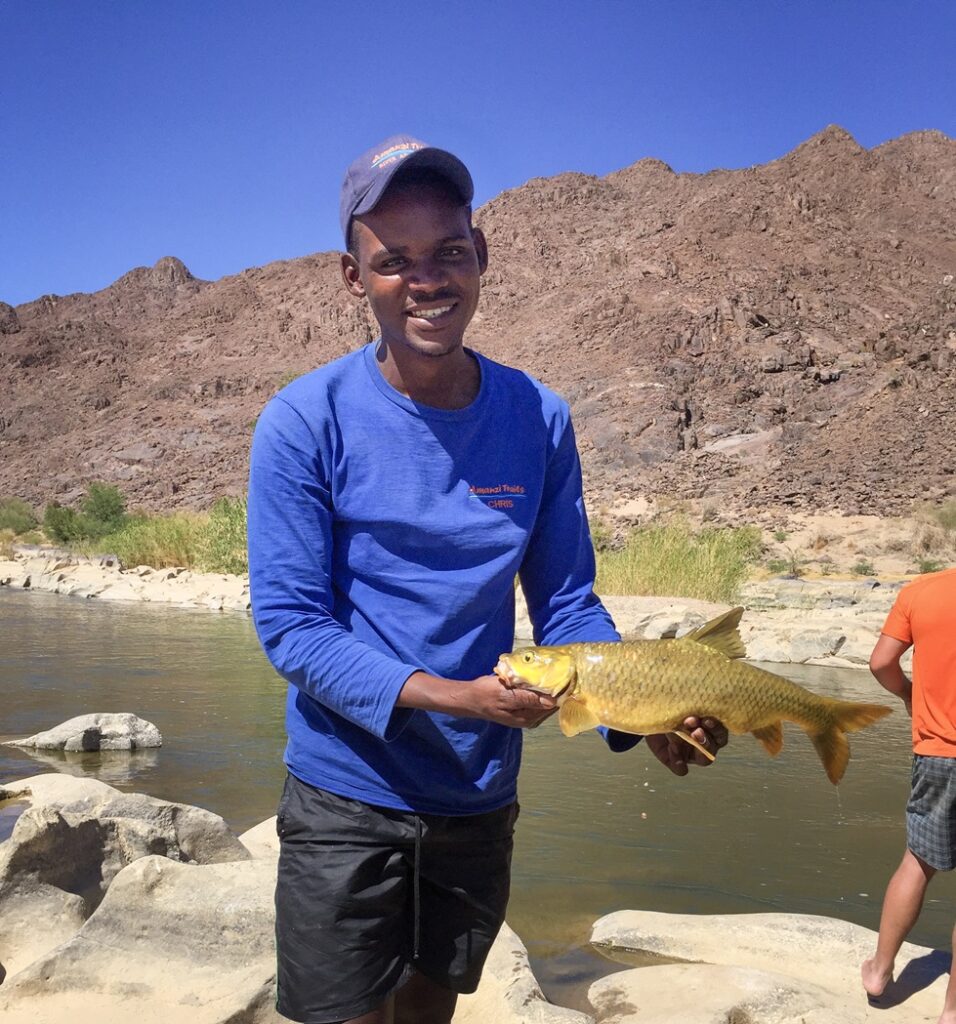
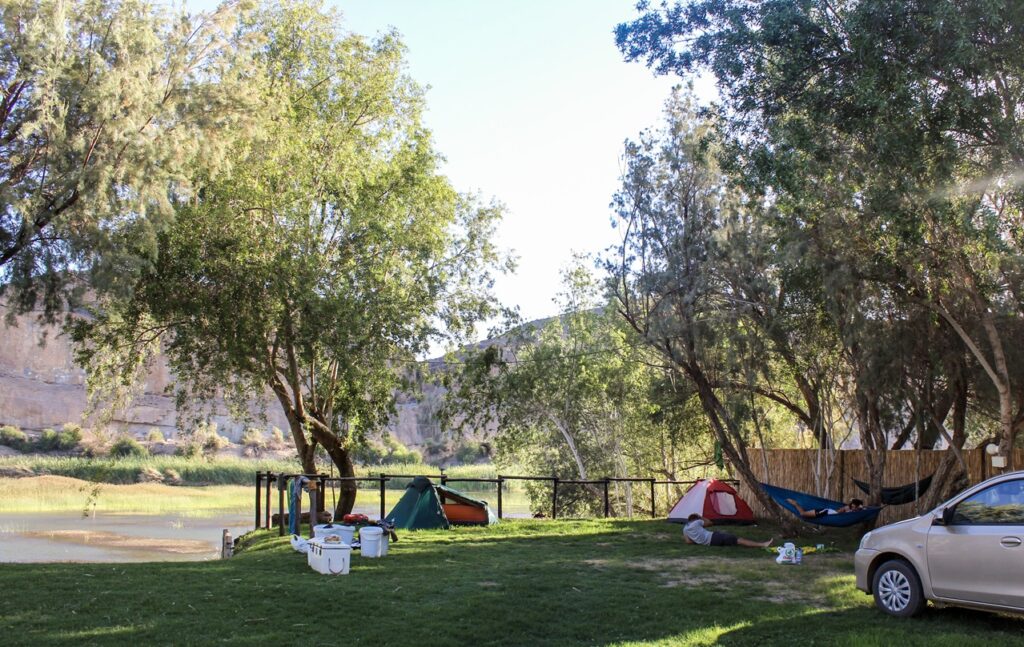
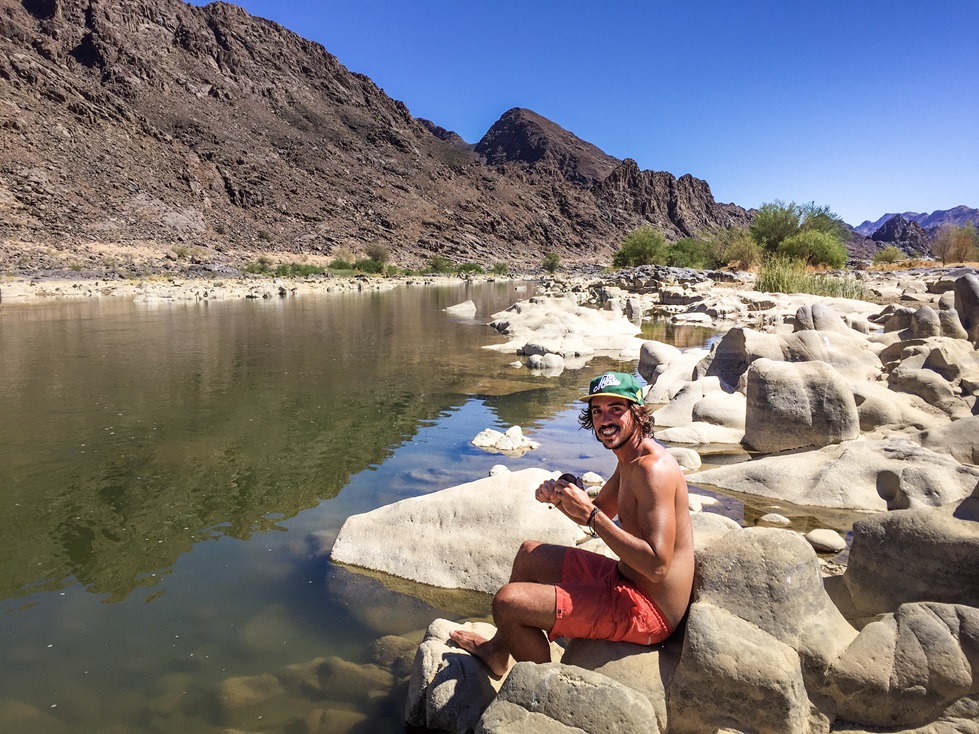
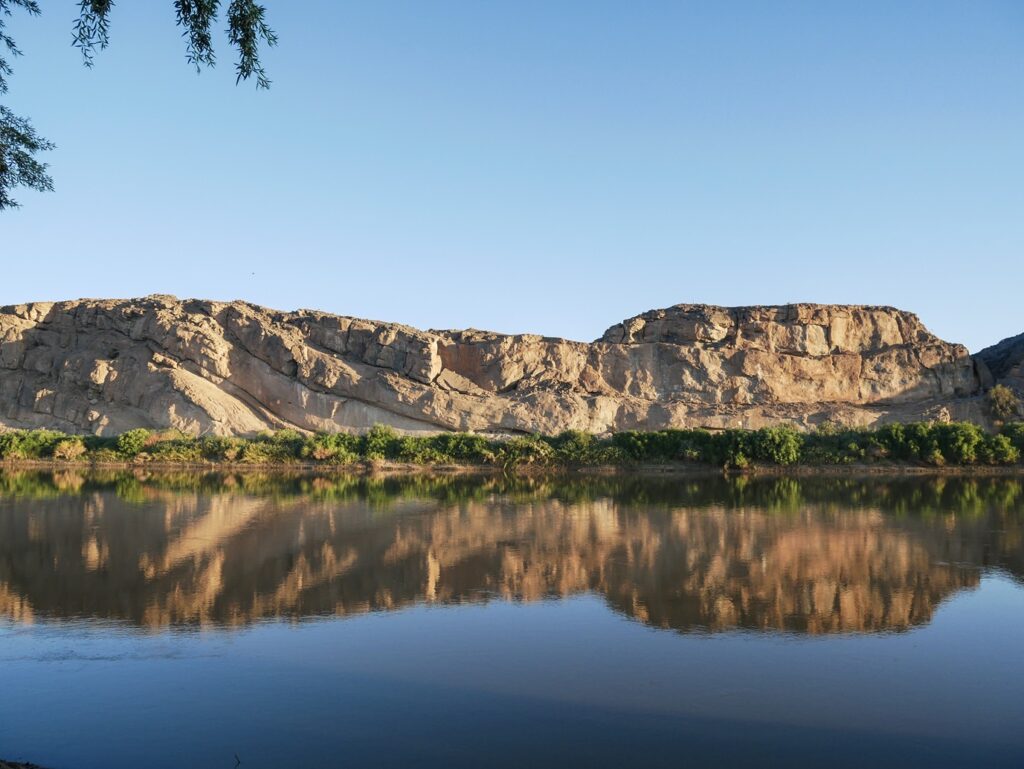
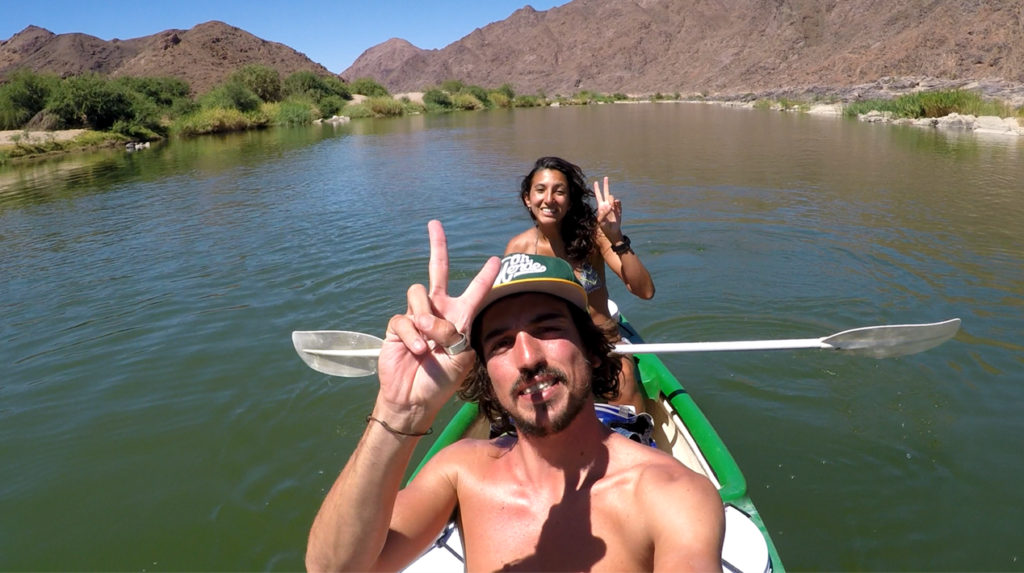
2. Fish River Canyon and the hot springs of Ai-Ais
The Fish River Canyon is one of the largest canyons in the world. It’s impressive, and the late afternoon lights are beautiful, so it would be a shame not to make a detour to its viewpoint!
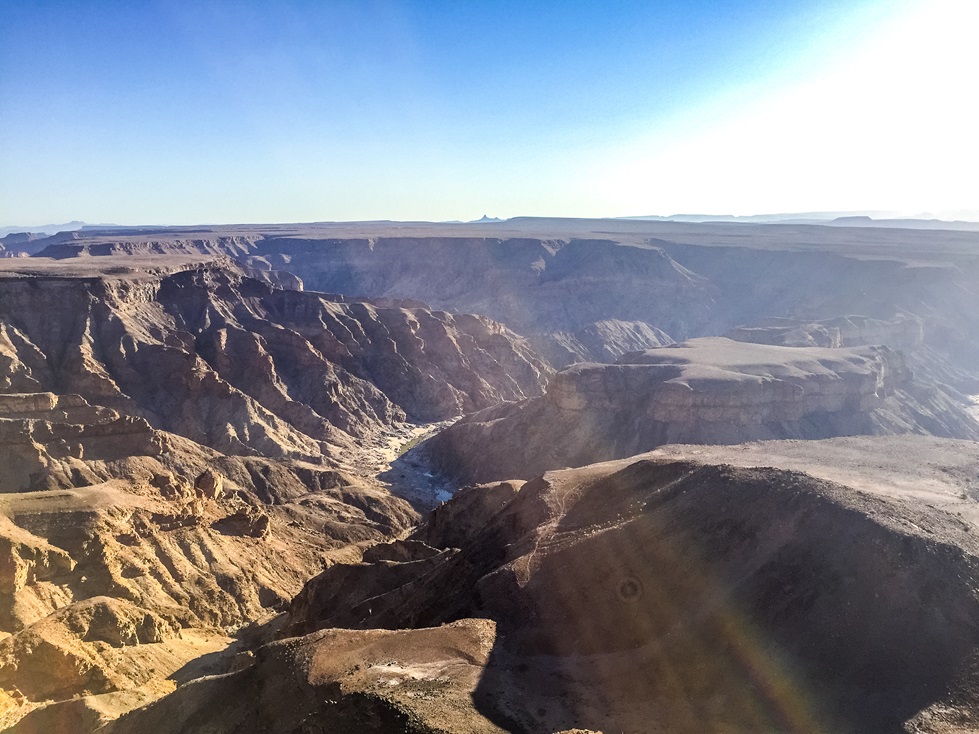
And not far away, there are the hot springs of Ai-Ais, which means “burning” in Khoisan, logical, isn’t it?
On our side, we stopped at the Ais-Ais campsite to enjoy the hot springs. A beautiful setting, a super pleasant spring water pool.
Early in the morning, we went for a short hike that leads to a viewpoint above the campsite (with a guest book at the top). The view is great, but be careful, it’s steep and it can get very hot. Remember to bring plenty of water and cover up!
So, we slept 2 nights camping, and when we woke up, a group of baboons would come to raid the bins (and your belongings if you’re not extremely careful). It’s very funny, but also a bit scary. Apparently, they’re not always there…
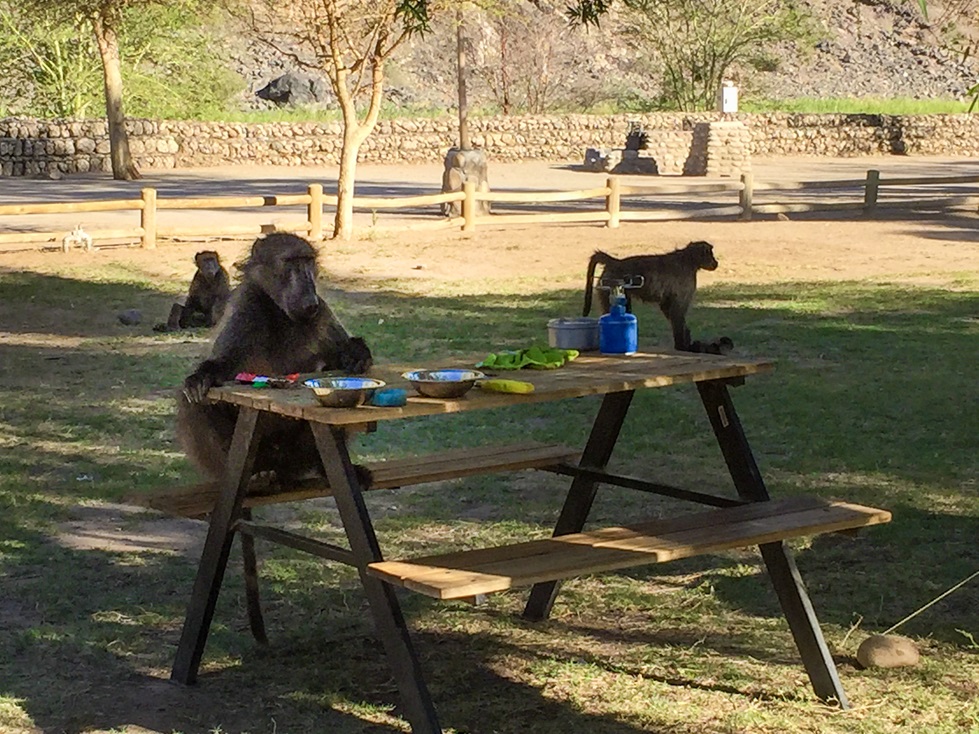
Stunning view and camping, we came across thieving baboons, zebras, and oryxes…”
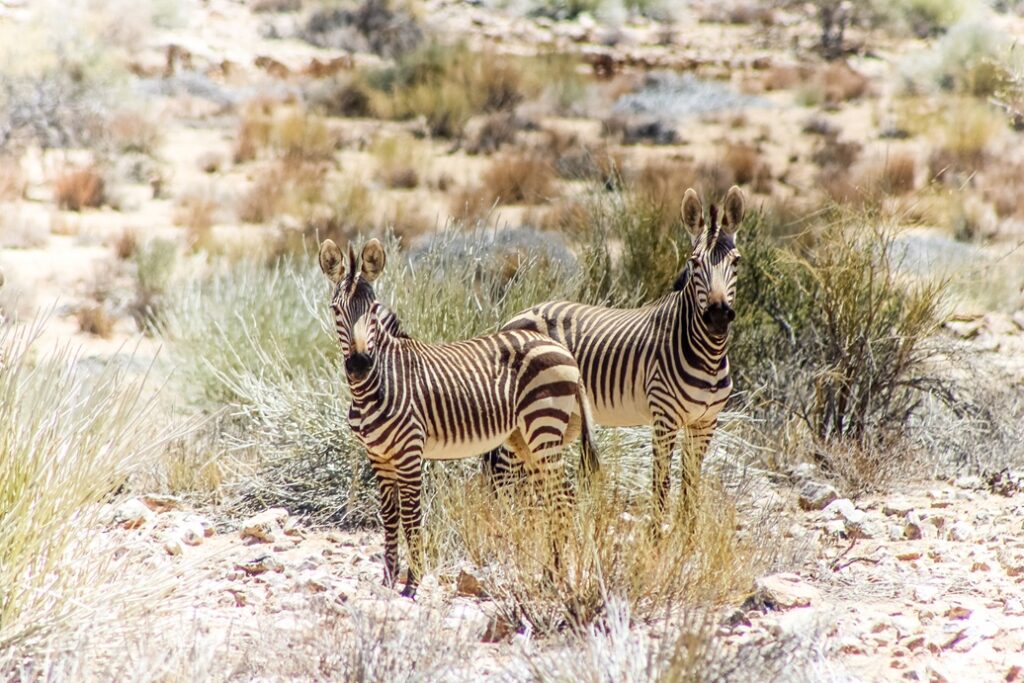
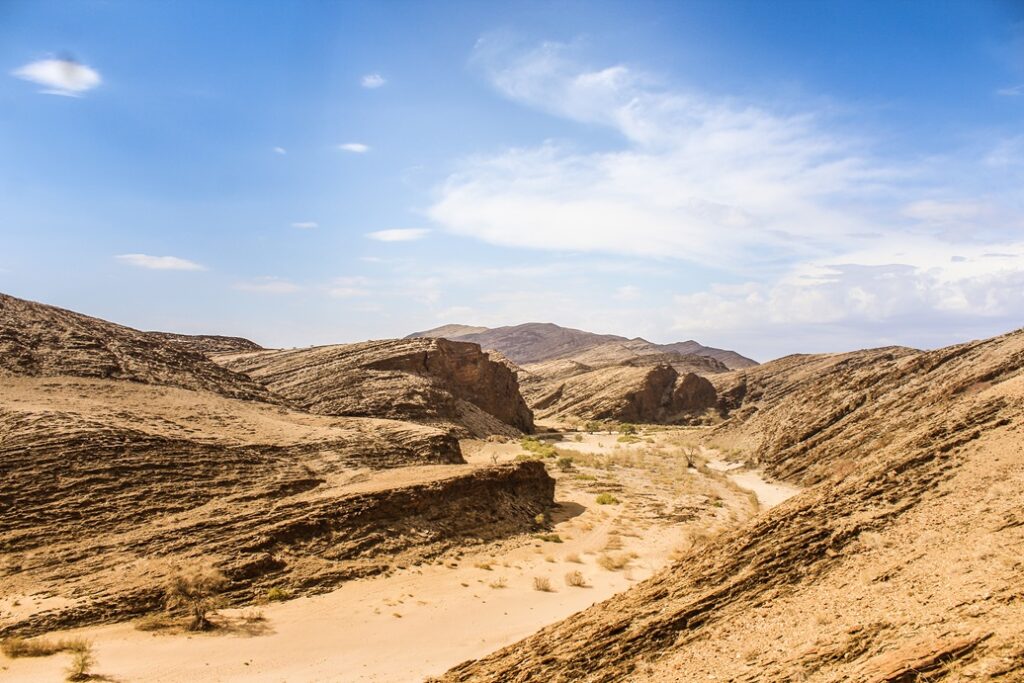
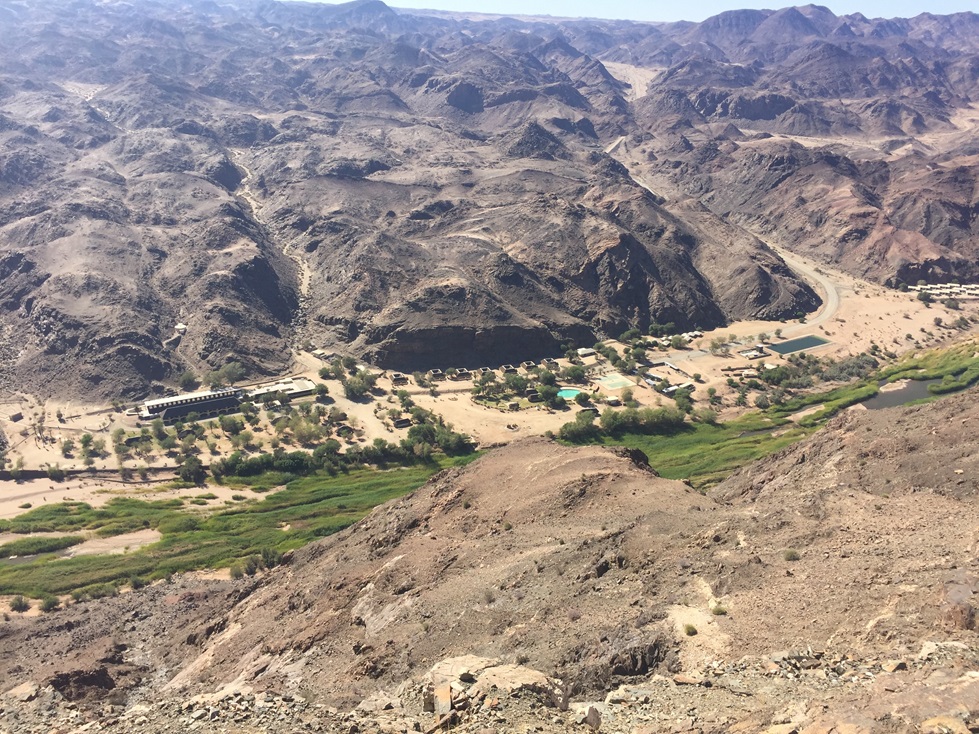
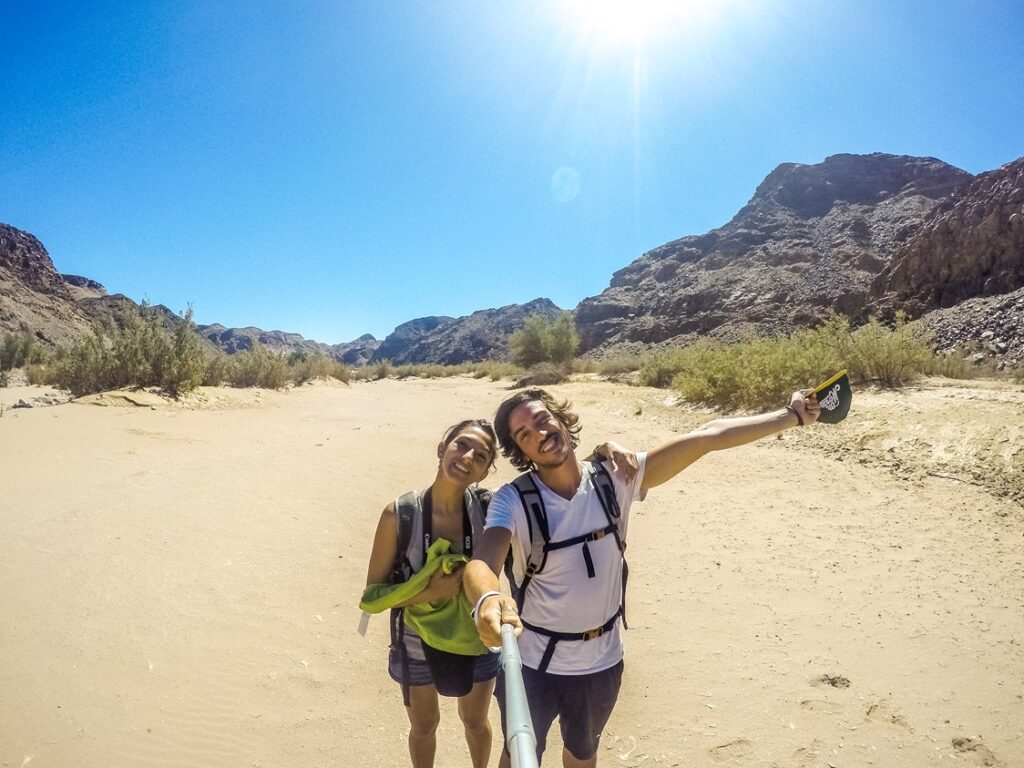
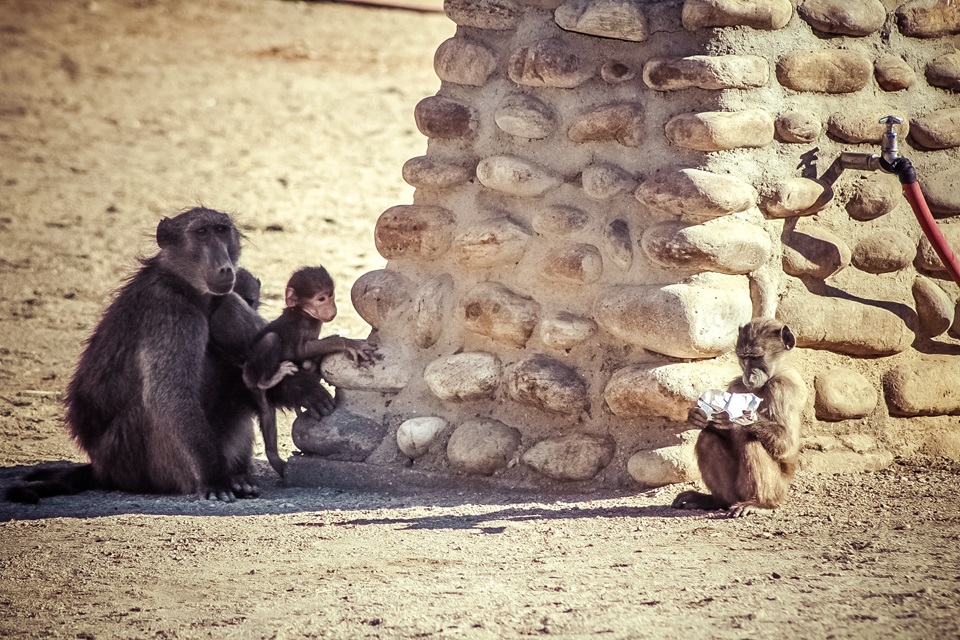
Fish River Hiking Trail: it’s possible to take a 5-day guided hike to cross the canyon. Only in winter from mid-April to mid-September (we missed it, we were there from mid-October to late November).
3. Luderitz and Kolmanskop
Lüderitz is a pretty little coastal town founded by German traders, the oldest town in South-West Africa. We liked this relaxing stopover.
The sea, the seals, the seafood restaurants, its beautiful German colonial-style buildings, its sandy streets…
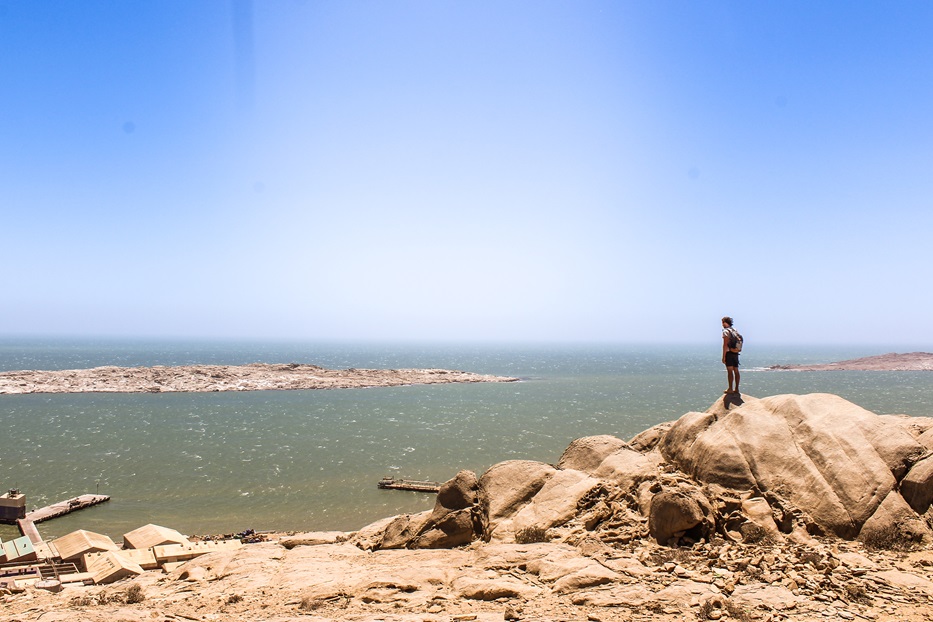
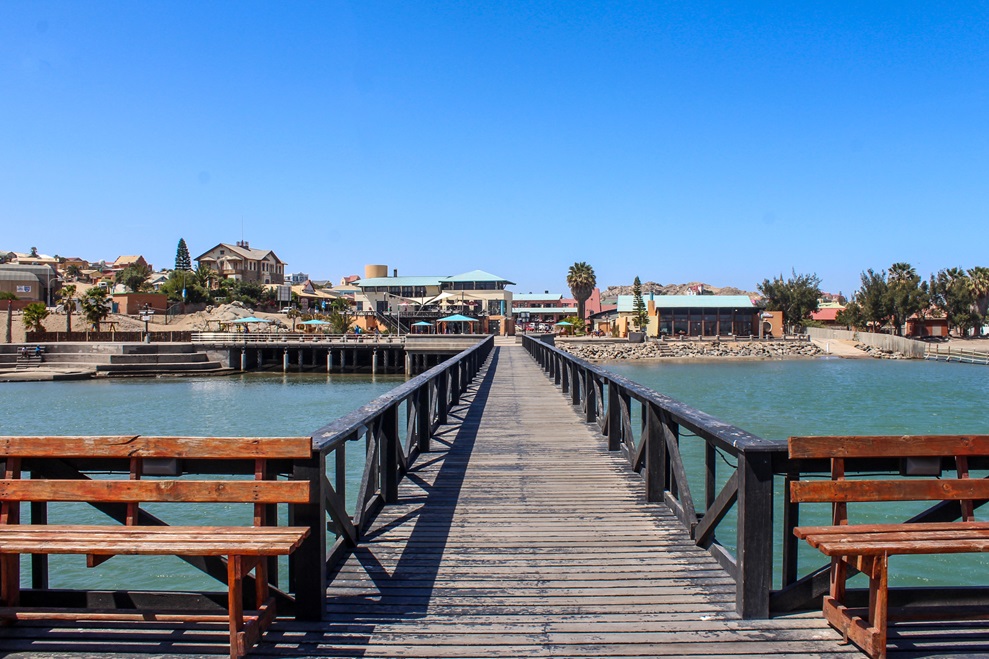
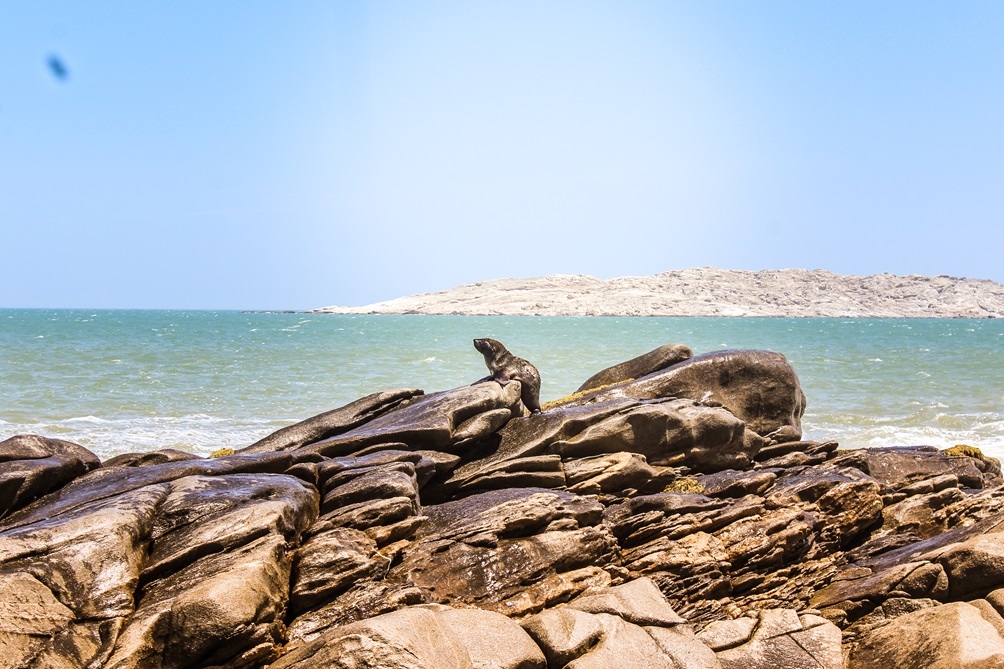
A little before arriving in Luderitz, you can’t miss the ghost town of Kolmanskop. Incredible to see and a paradise for photography enthusiasts!
Once inhabited to exploit diamonds, today the Namibian desert gradually swallows the buildings…
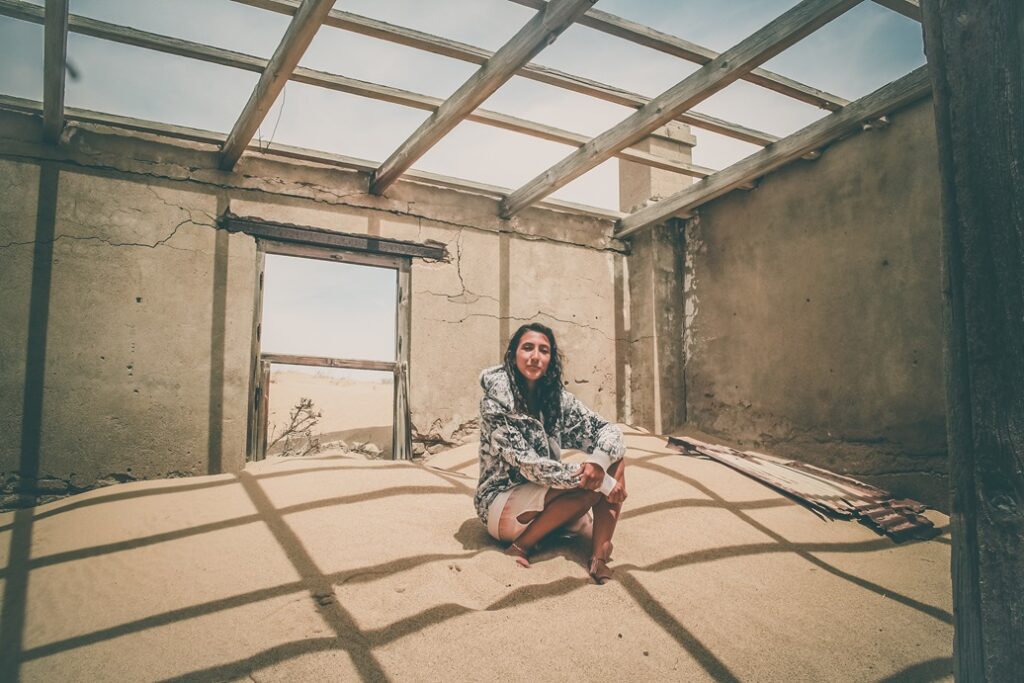
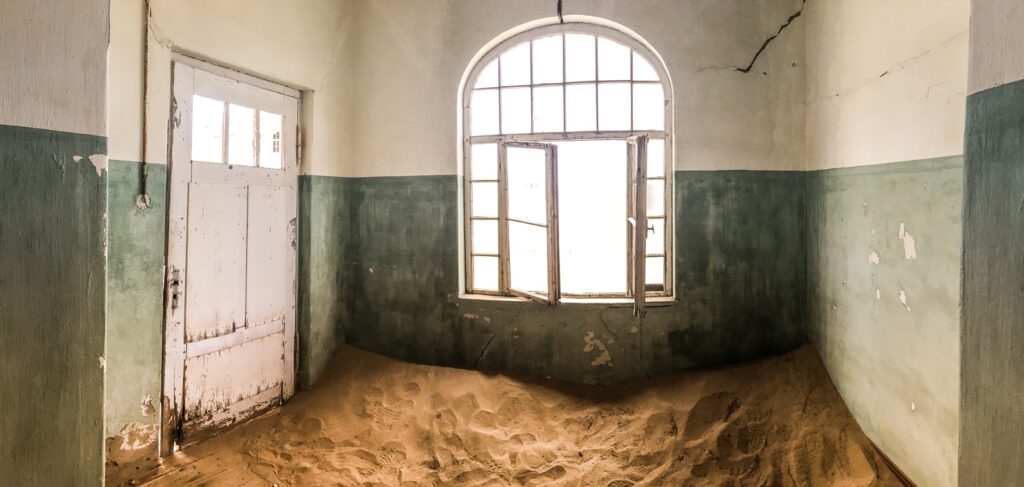
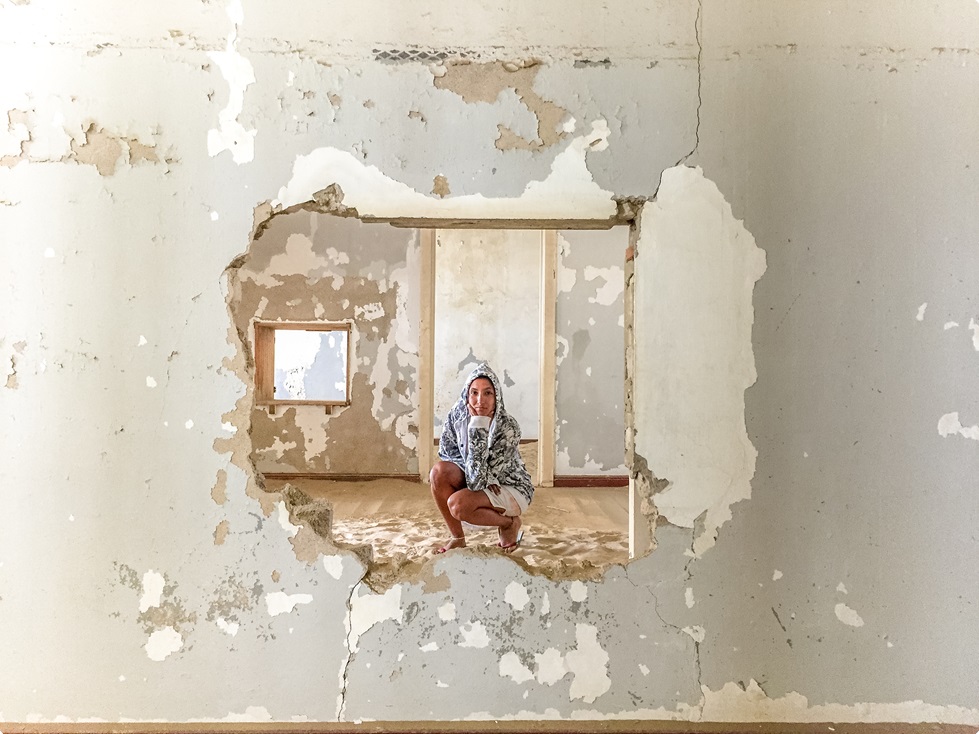
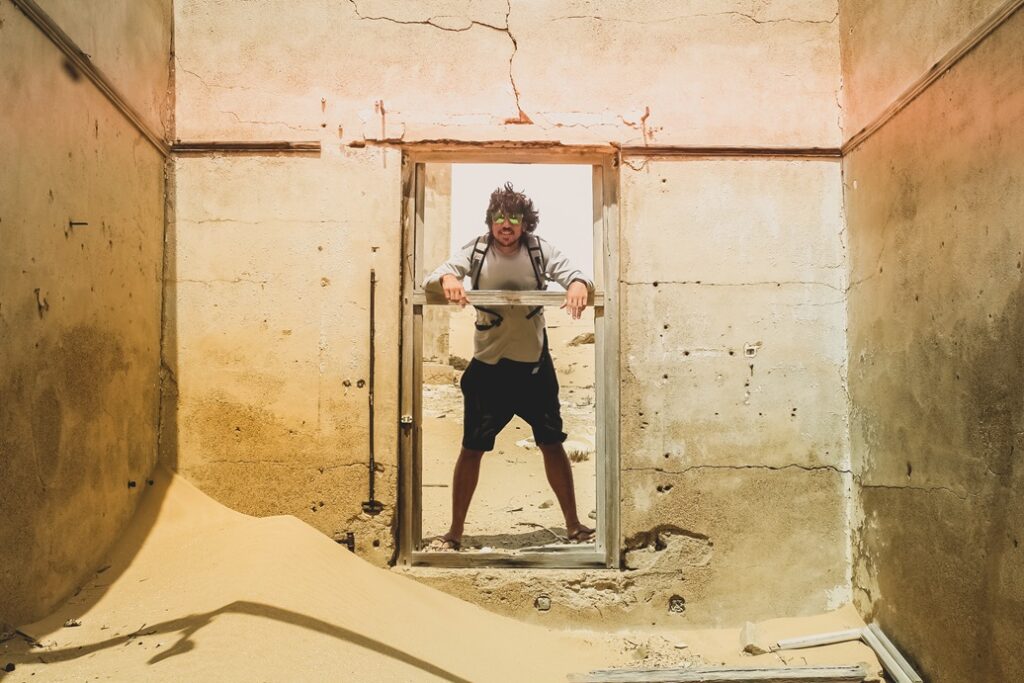
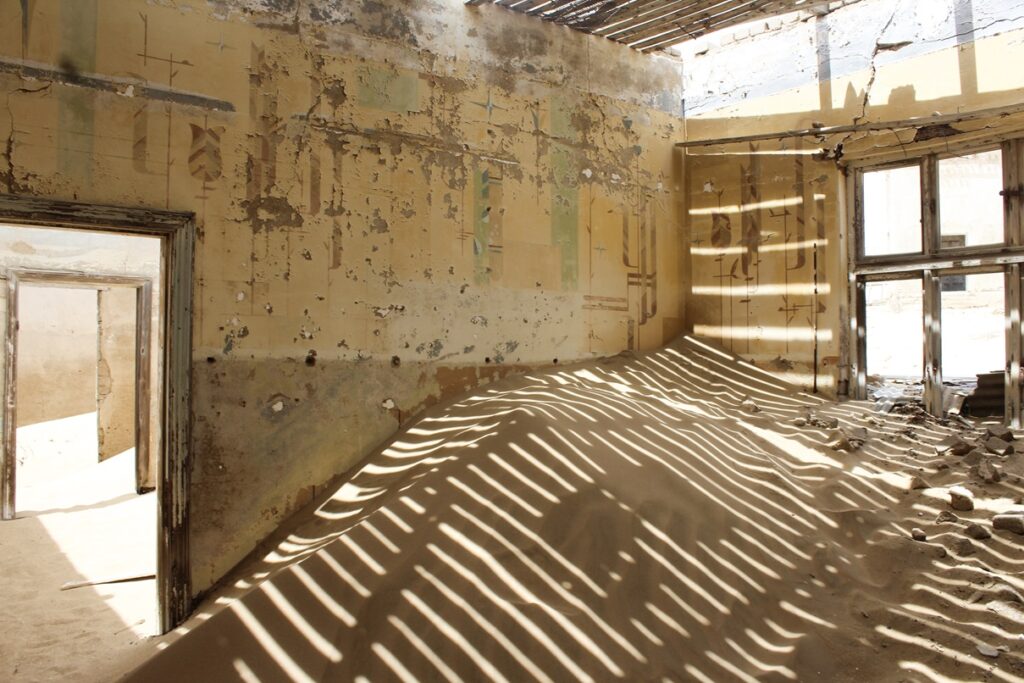
4. Sossusvlei, Mad Max’s desert
Sossusvlei is a salt and clay desert located in the Namib Naukluft Park. It’s also the most visited spot in Namibia.
At the same time, this sea of orange/red sand (used for filming Mad Max among others) is spectacular.
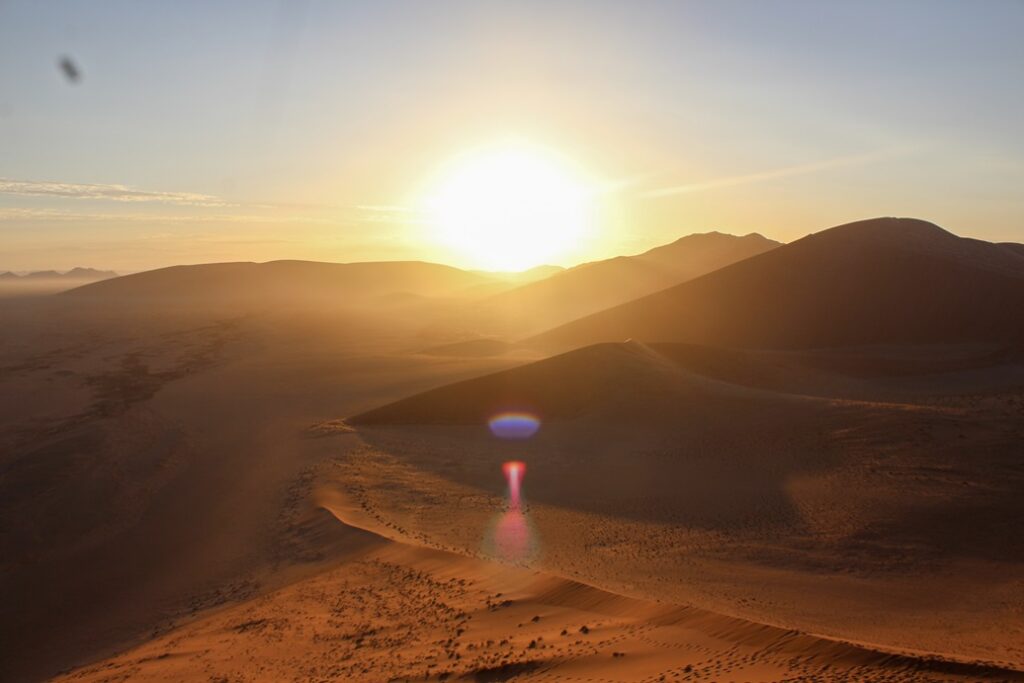
On our side, we camped in Sesriem and entered the park at the first light of day. We started by climbing Dune 45 to enjoy the sunrise… incredible.
Then we went to climb Big Daddy dune, the tallest dune in the world, in one go before it got too hot. Be careful, it’s steep and in the sand, but it’s worth it for the magnificent view and the downhill sprint to DeadVlei (especially when, like us, you’re a bit silly and you’re in flip-flops on the scorching sand).
Dead Vlei, you’ve definitely seen it in photos if you’re planning a trip to Namibia. It’s a basin of white clay where soon-to-be millennium-old trees have died, amazing.
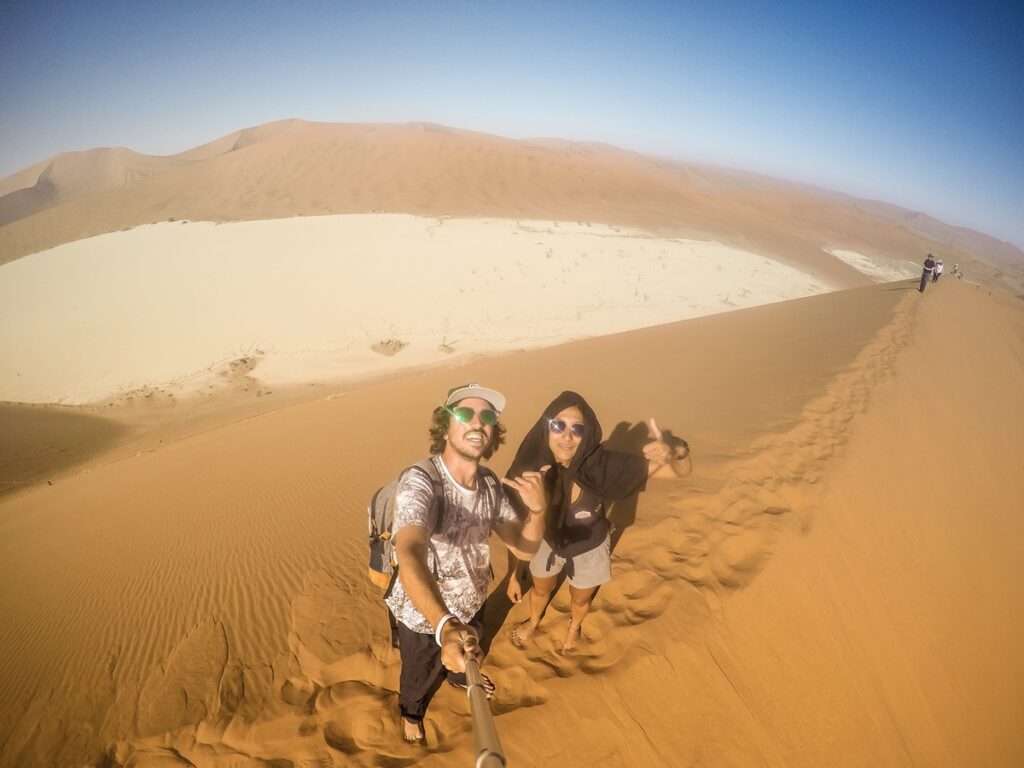
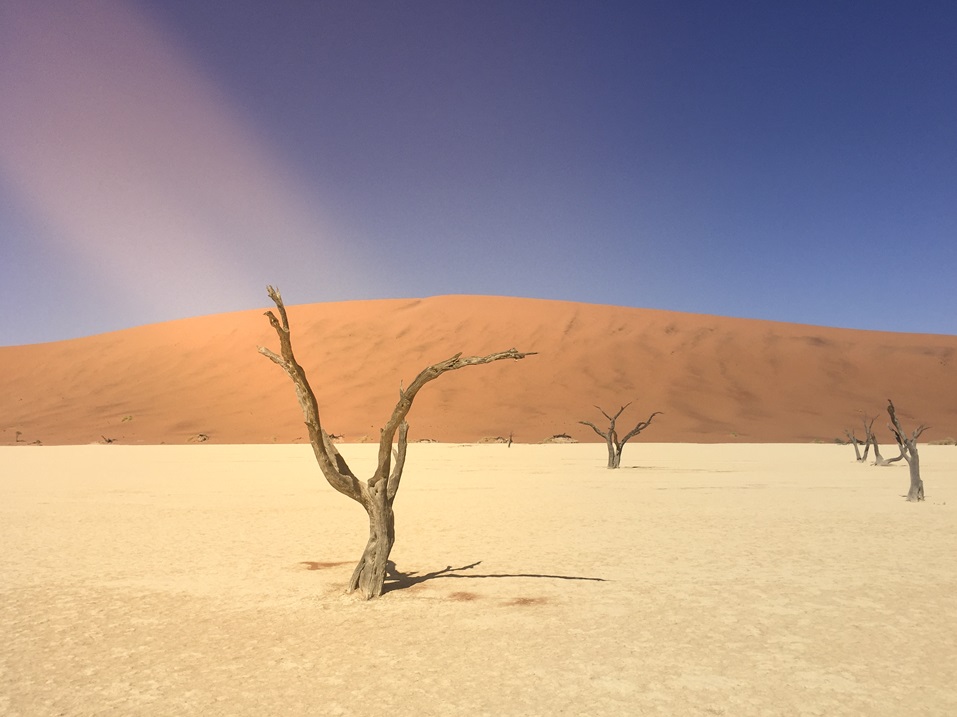
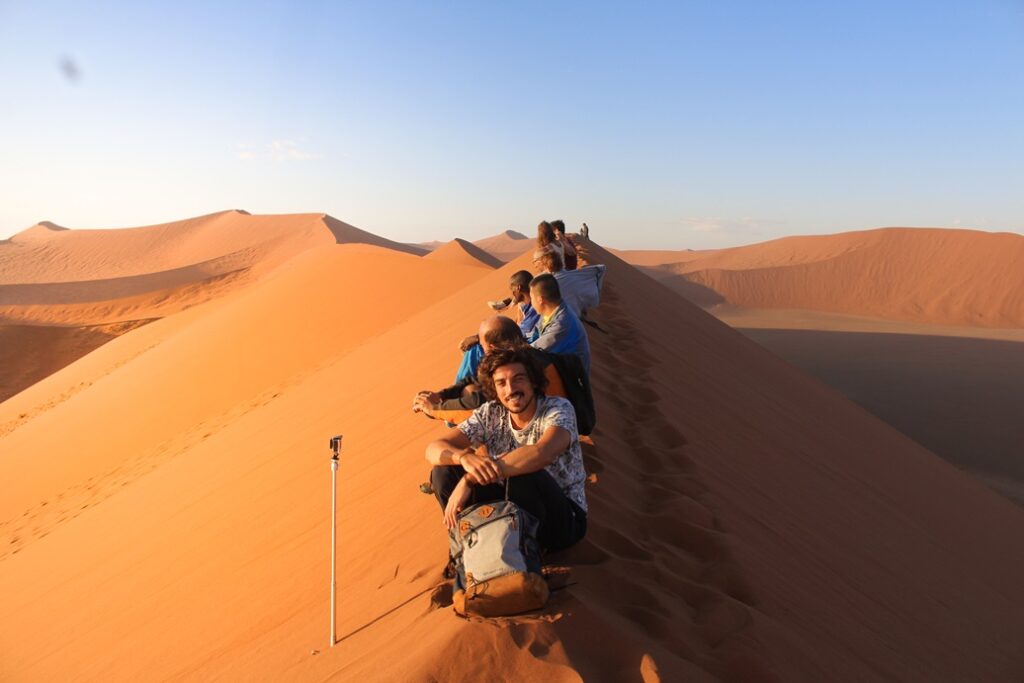
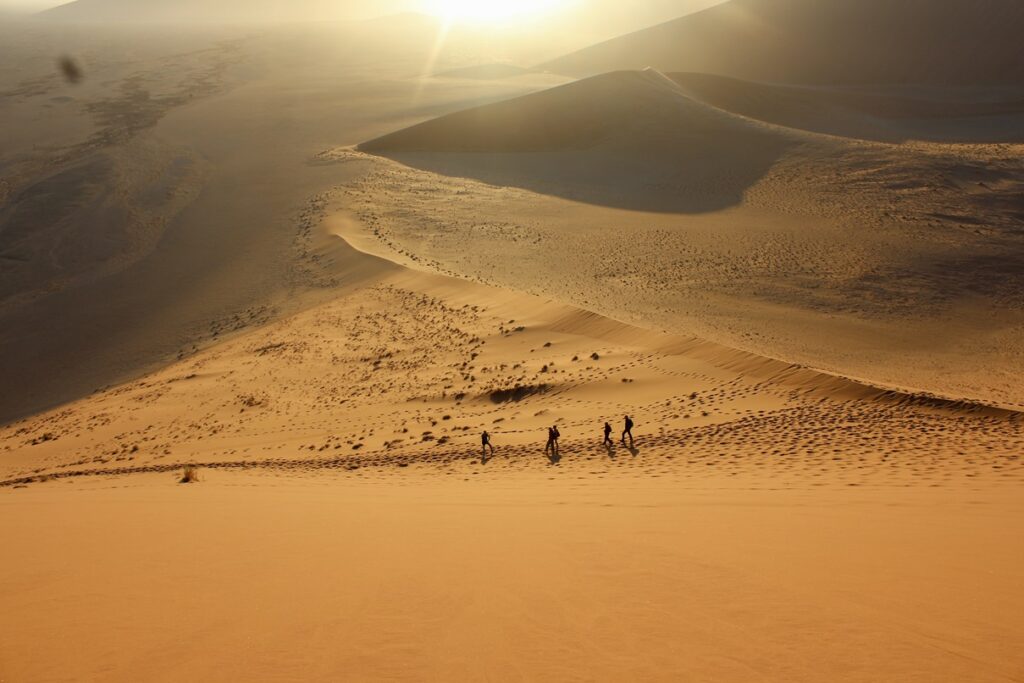
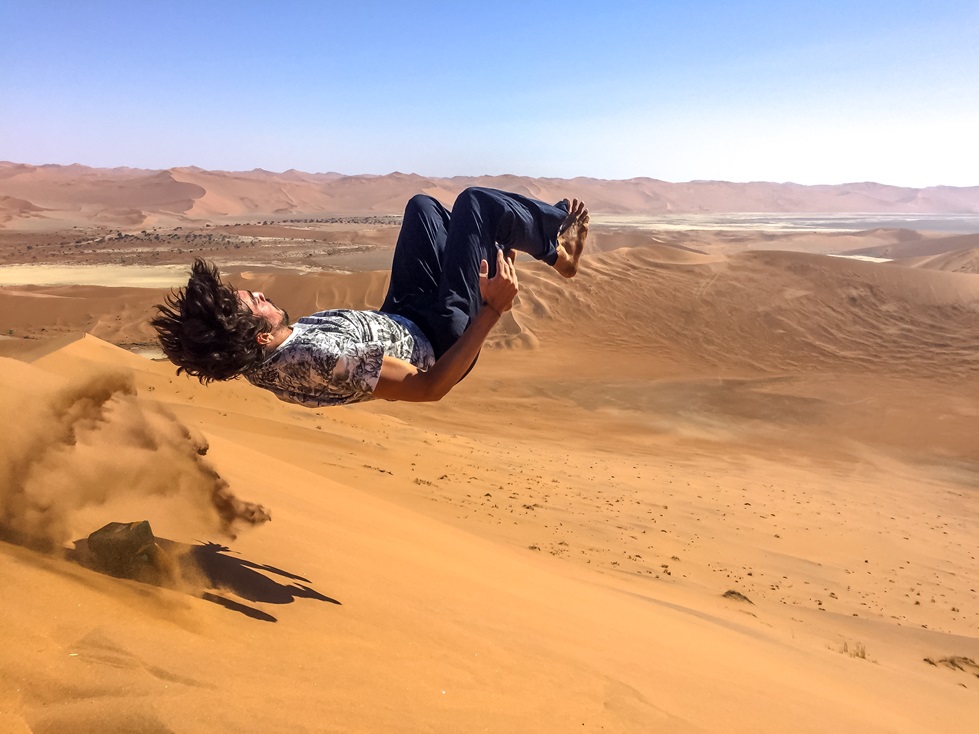
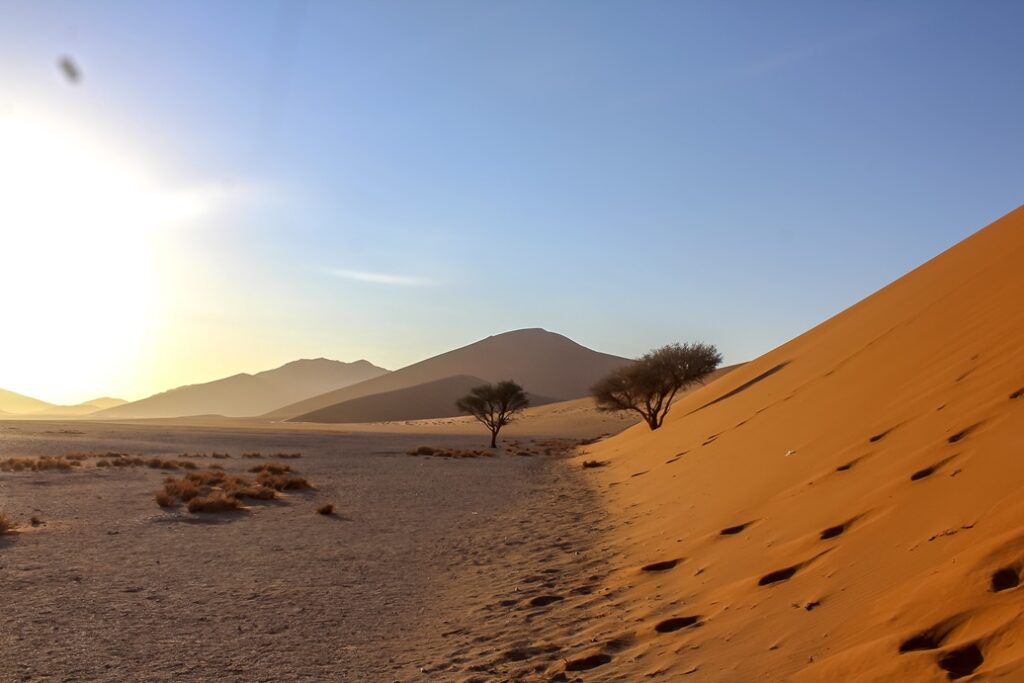
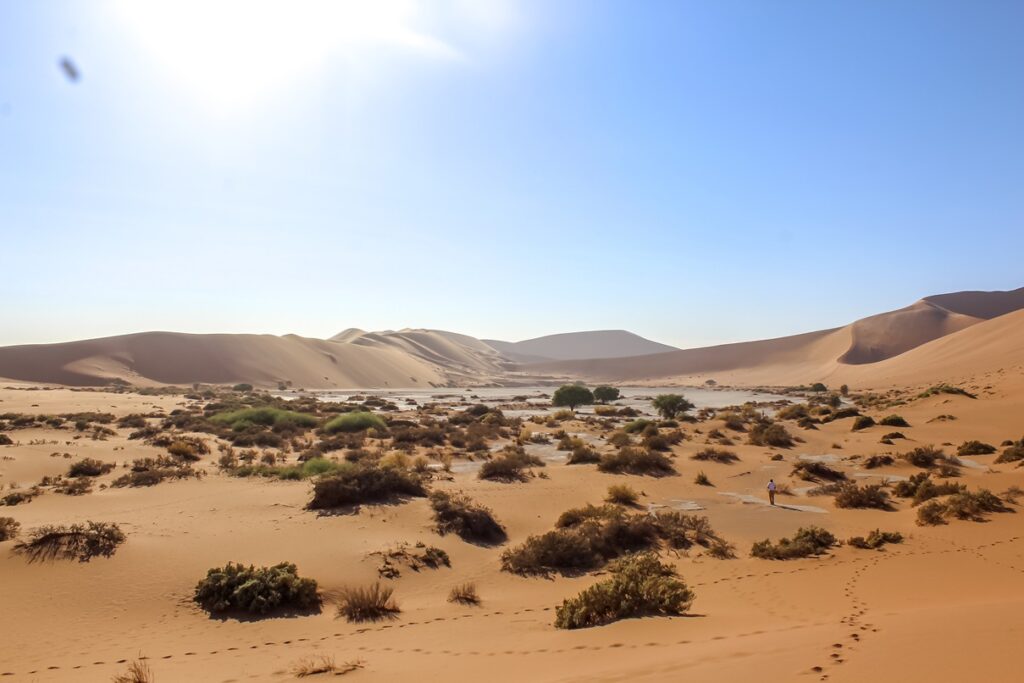
5. Sesriem Canyon
Sesriem is located between the capital Windhoek and Walvis Bay. The Tsauchab River has carved a canyon, 1km long and 30 meters deep, where you can walk and easily accessible on the C37 near the locality Sesriem.
The canyon walls are made of sandstone and shale, and there’s little or no water. Like the Fish River, it’s always more beautiful with the colors of sunrise or sunset!
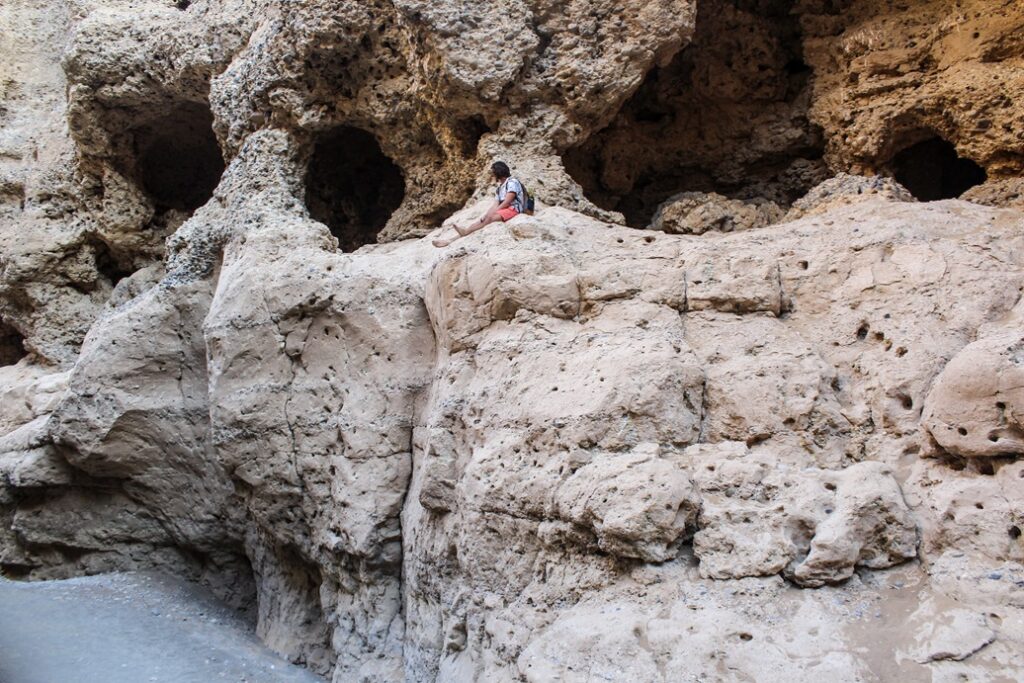
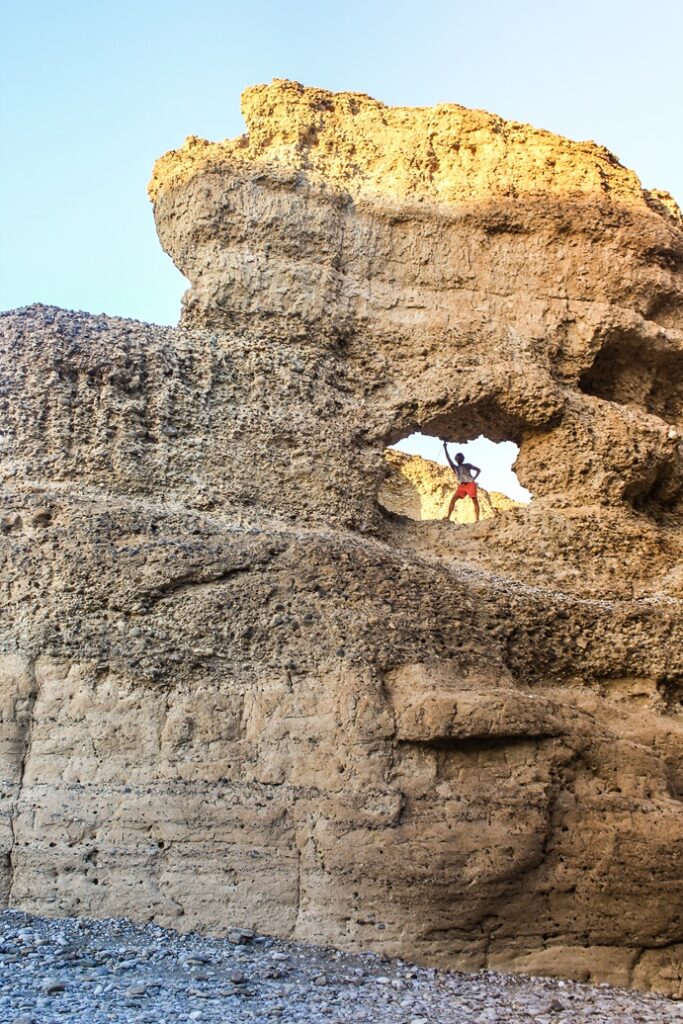
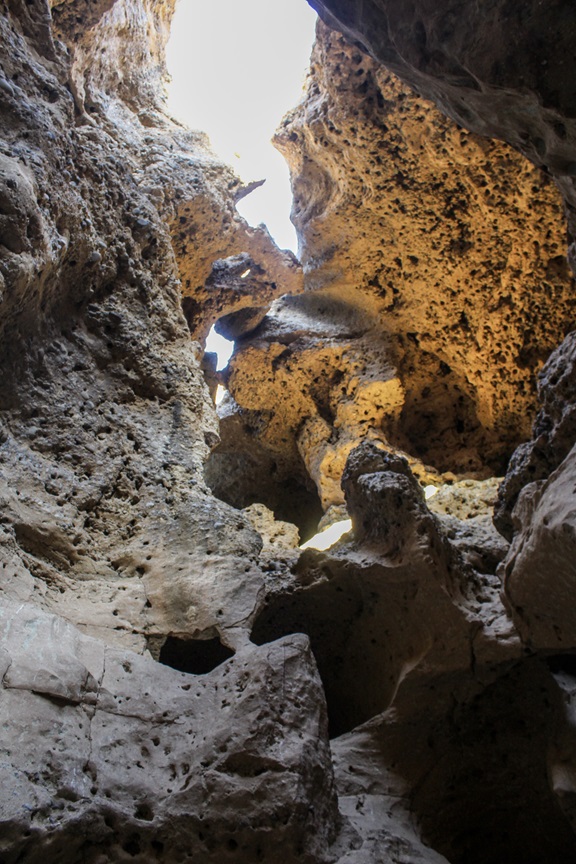
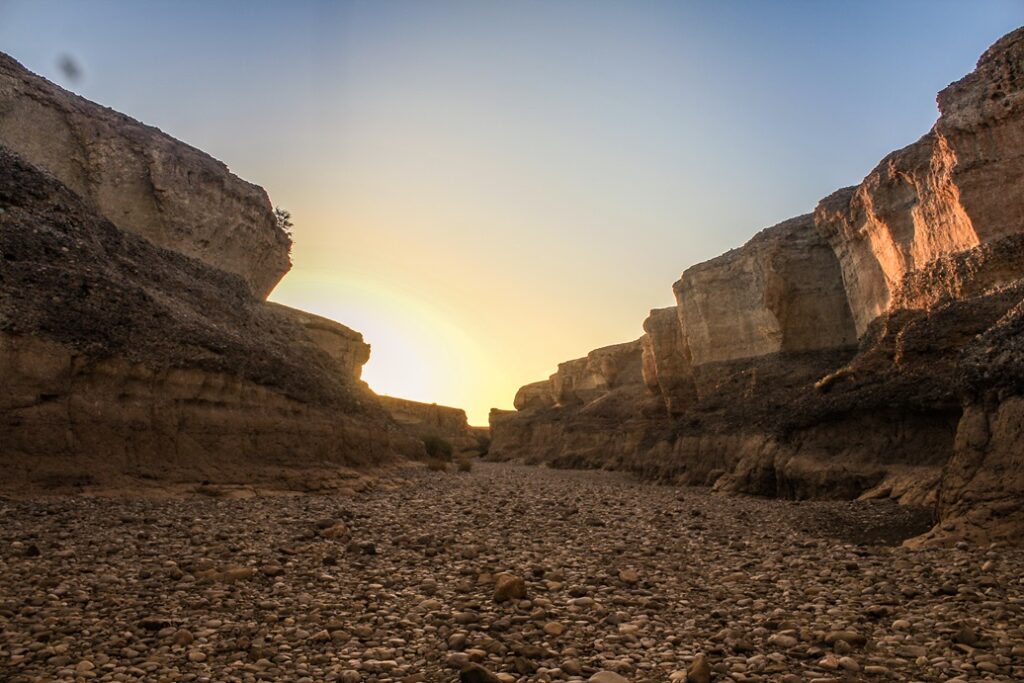
6. Swakopmund and Walvis Bay
On the road (C14) between Sesriem and Walvis Bay, we crossed the imaginary line of the Tropic of Capricorn!
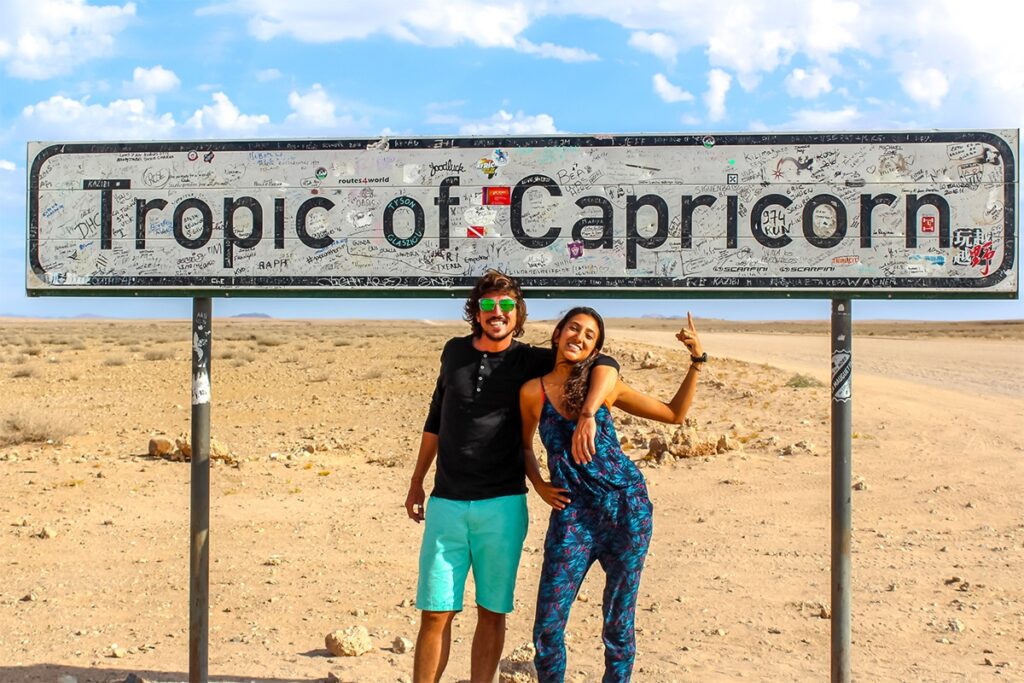
Before arriving in Swakopmund, we made a stop in Walvis Bay… a place known for its gathering of flamingos! It’s quite impressive, especially when they all decide to take off at the same time! Magical.
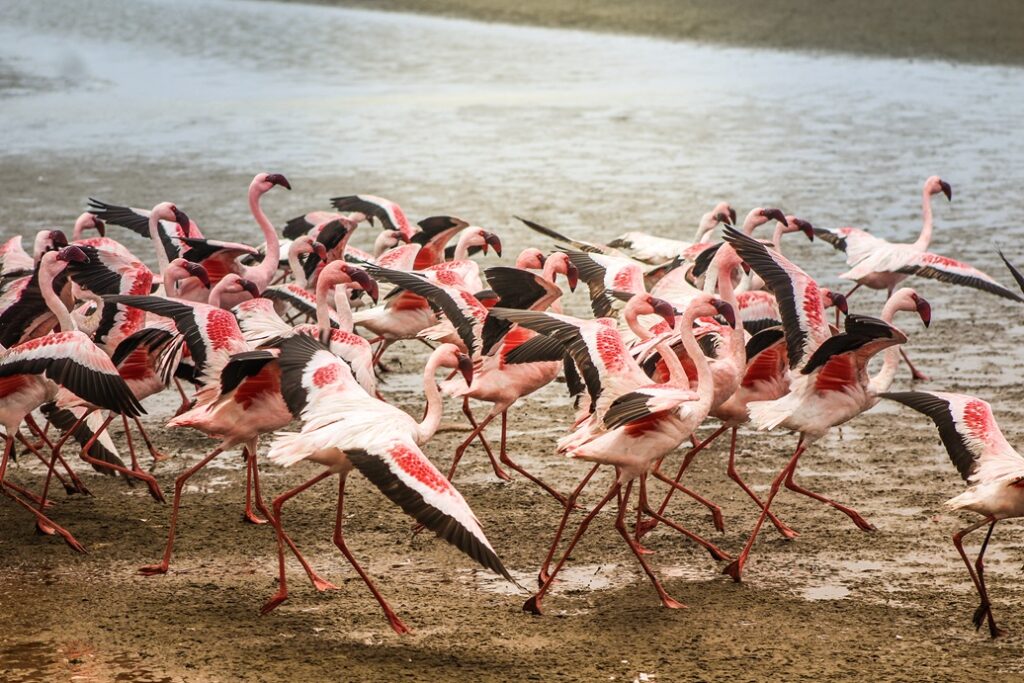
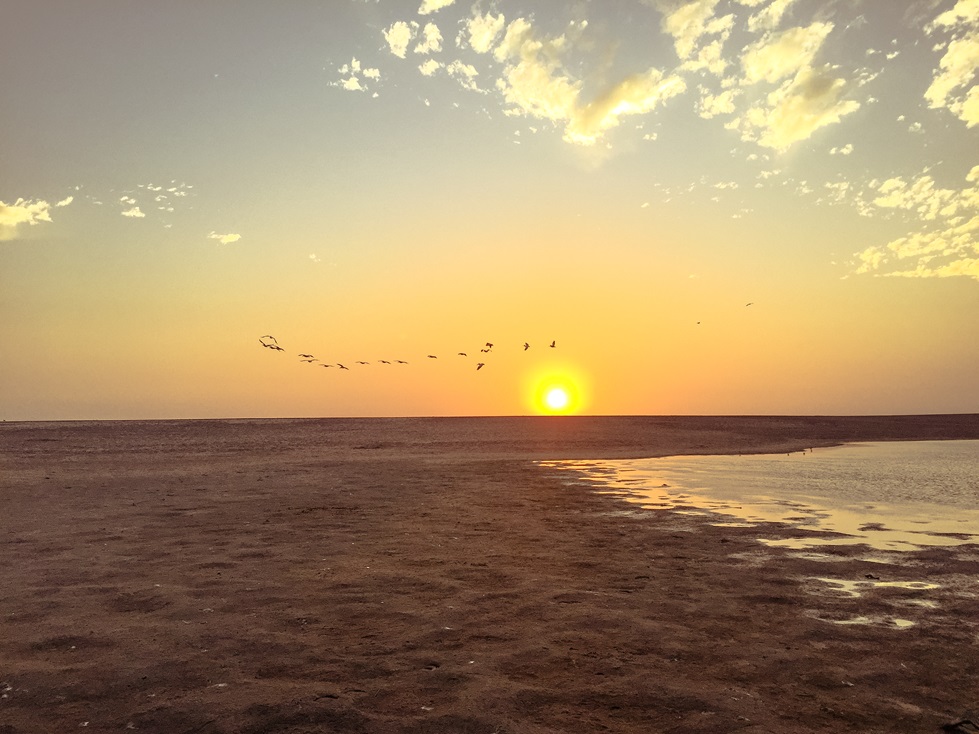
Swakopmund is a good stopover town. Like Lüderitz, Swakopmund is a coastal town with German influences, but more developed. With its beautiful colonial architecture (like the Woermannhaus or the Hohenzollernhaus), its museums, its jetty by the beach.
There are also plenty of outdoor activities, including surfing (yes, but with a good wetsuit), quad biking / mountain biking, or sandboarding in the dunes. We actually rented bikes to visit the town.
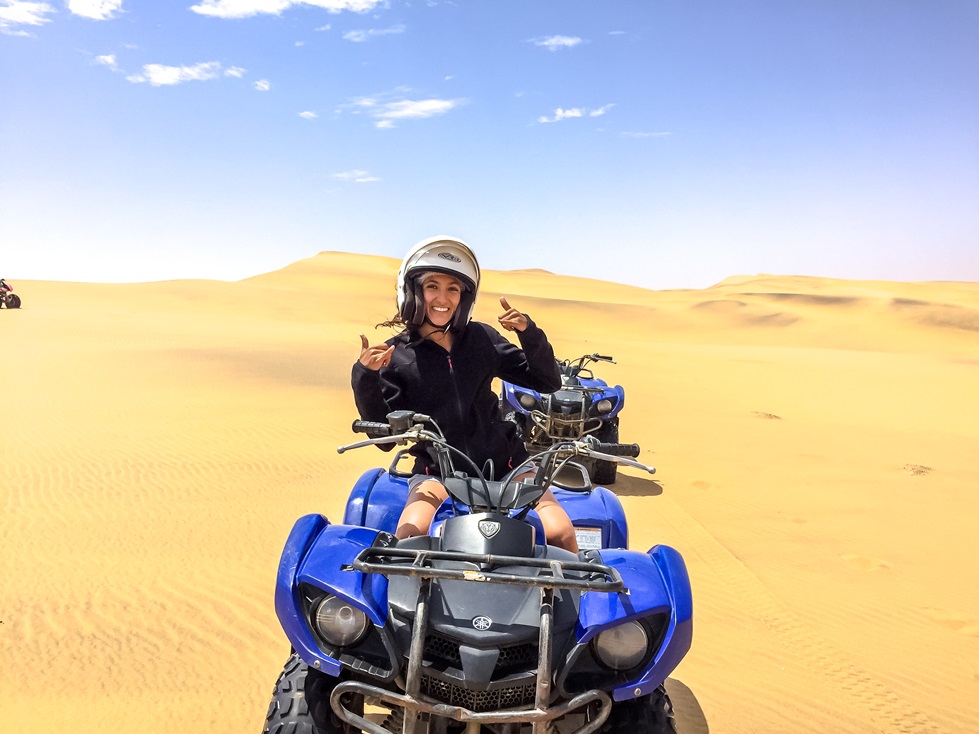
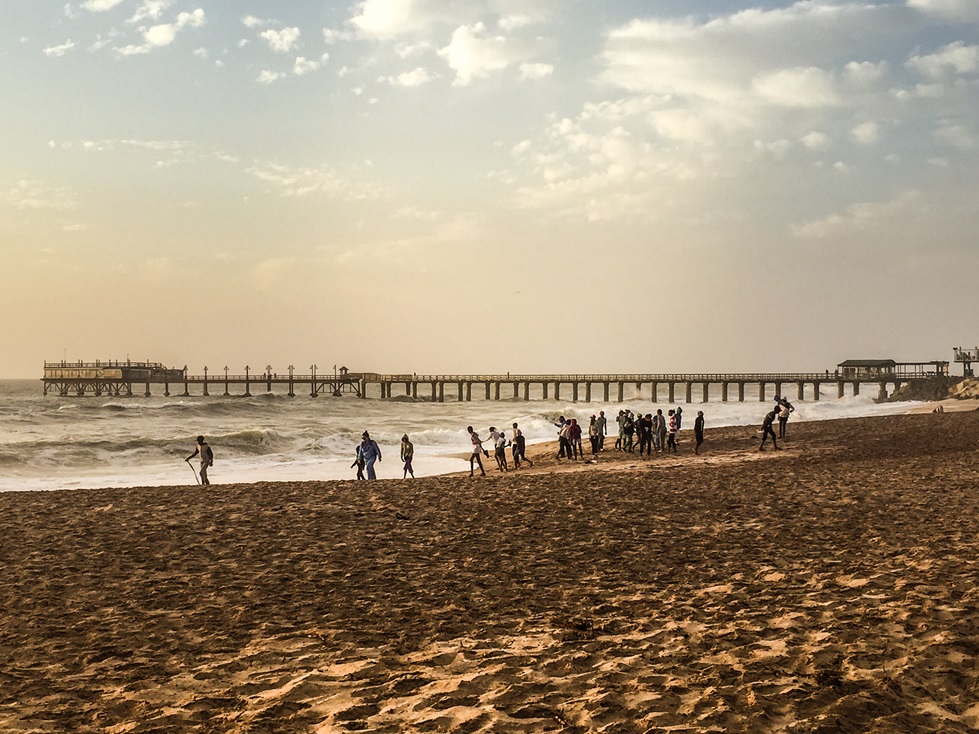
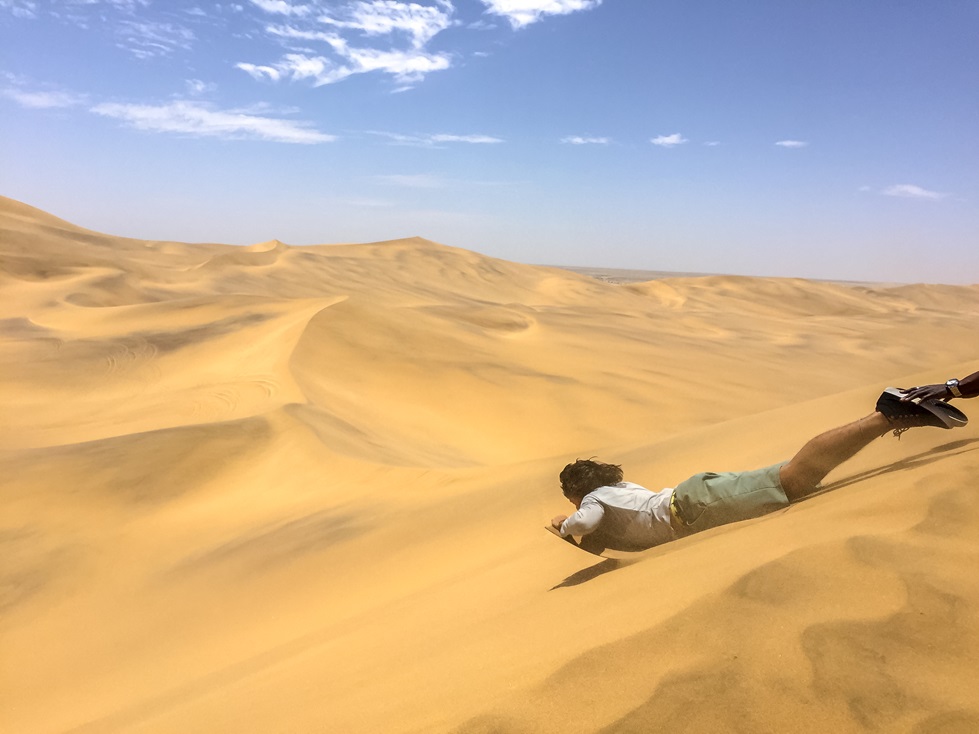
You can also go skydiving, visit the seals at Cape Cross, or go kayaking in Walvis Bay.
7. Spitzkoppe, the pointed hat
A little further north of Swakopmund, we discovered Spitzkoppe (pointed hat in Afrikaans), a small group of mountains that rise majestically from their flat and desert environment. The granite peaks, including the “Groot Spitzkoppe,” are about 700 million years old.
You really feel alone in the world camping there. There are also some hiking trails, but it was really too hot for us.
Be careful, the road to get there is a D road… we had to drive very slowly to get there.
Between Spitzkoppe and Etosha, there’s the Twyfelfontein site that we didn’t visit, but apparently very interesting with its rock paintings (classified as a UNESCO World Heritage Site).
8. Etosha Animal Park
One of the highlights of our trip to Namibia, discovering the Etosha park. For our first real “safari,” we decided to spend 5 days there.
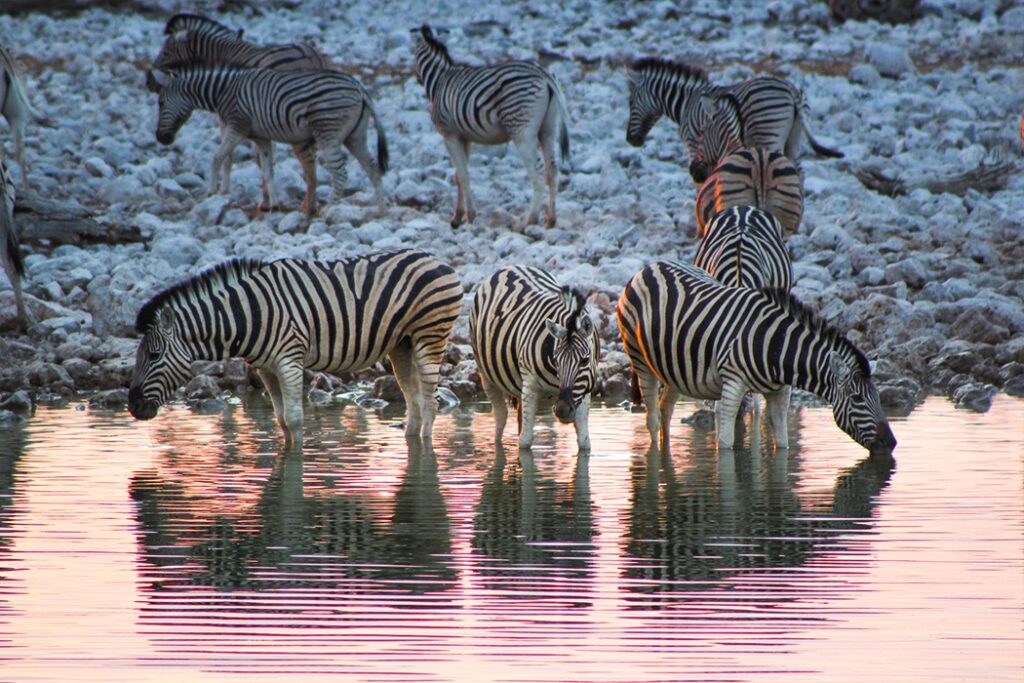
We’re outside school holidays, during the week… I wouldn’t say we had the park to ourselves, but it was close.
We could write an article just about the park, but we’ll keep it short. Etosha National Park is a large protected area in Namibia located in the Kunene region. It’s about 22,000 km² and is the 2nd largest animal park in Africa after Kruger.
There are several entrances, the main one being probably the Anderson Gate. Like almost all parks, you have to pay entrance fees per day per person + for the vehicle + accommodation.
On our side, we spent 2 nights in Okaukuejo, 1 night in Halali, and 1 night in Namutoni. All camping, and we had done the shopping to be self-sufficient for the 5 days. There are restaurants at affordable prices just in case.
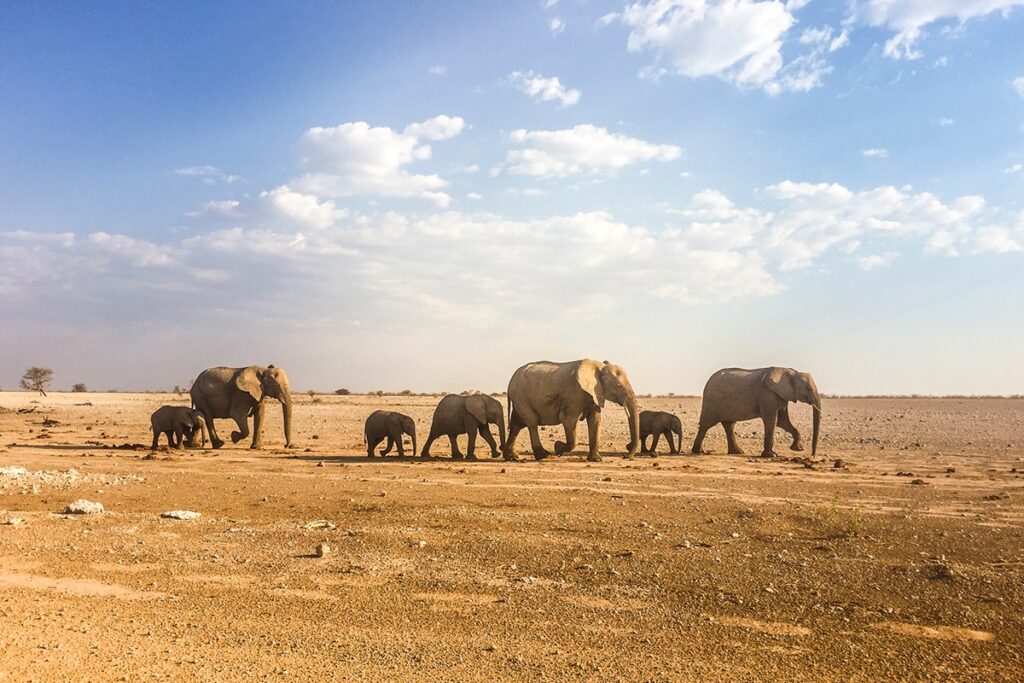
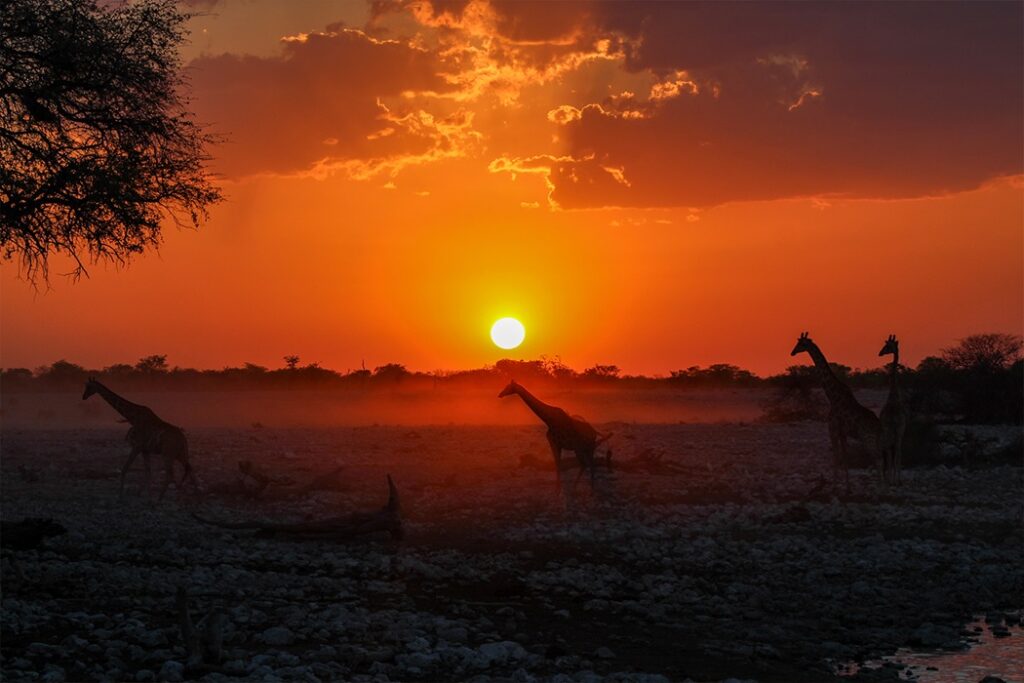
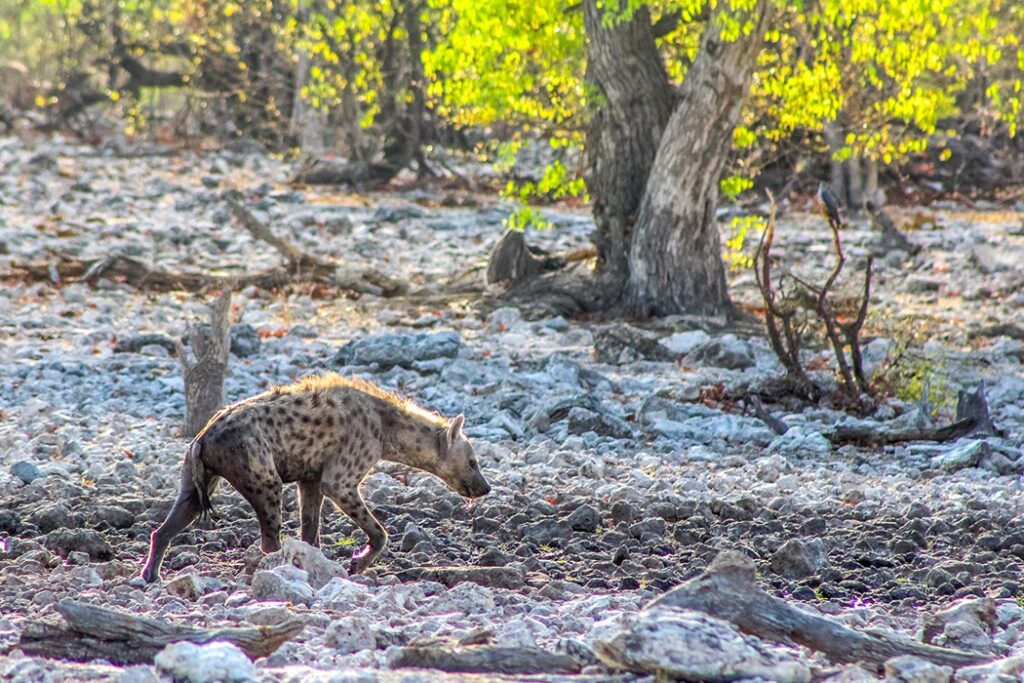
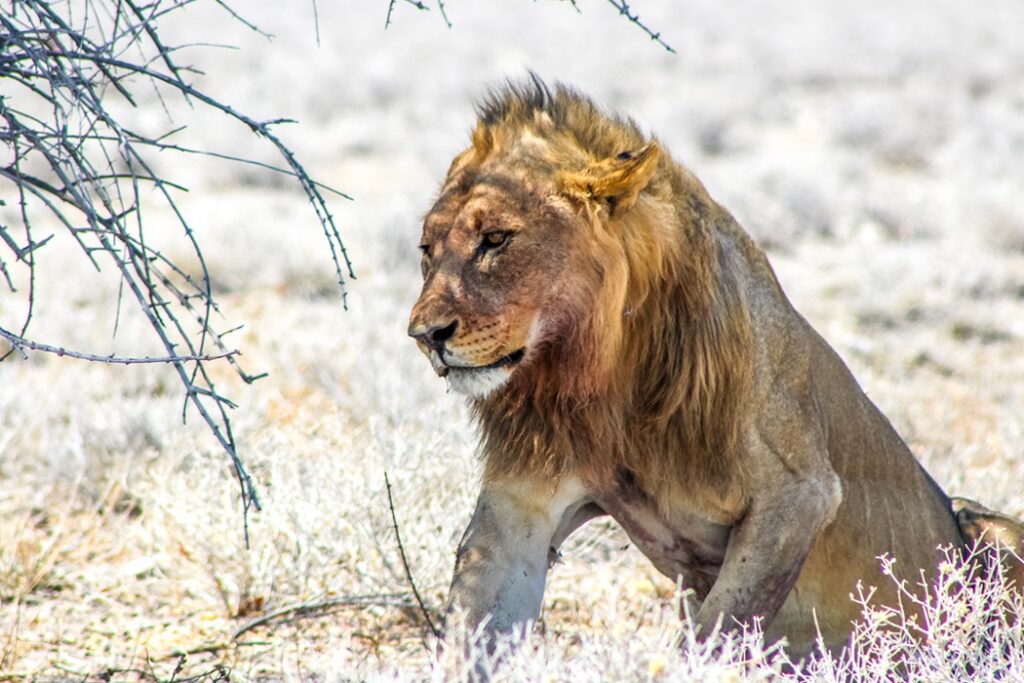
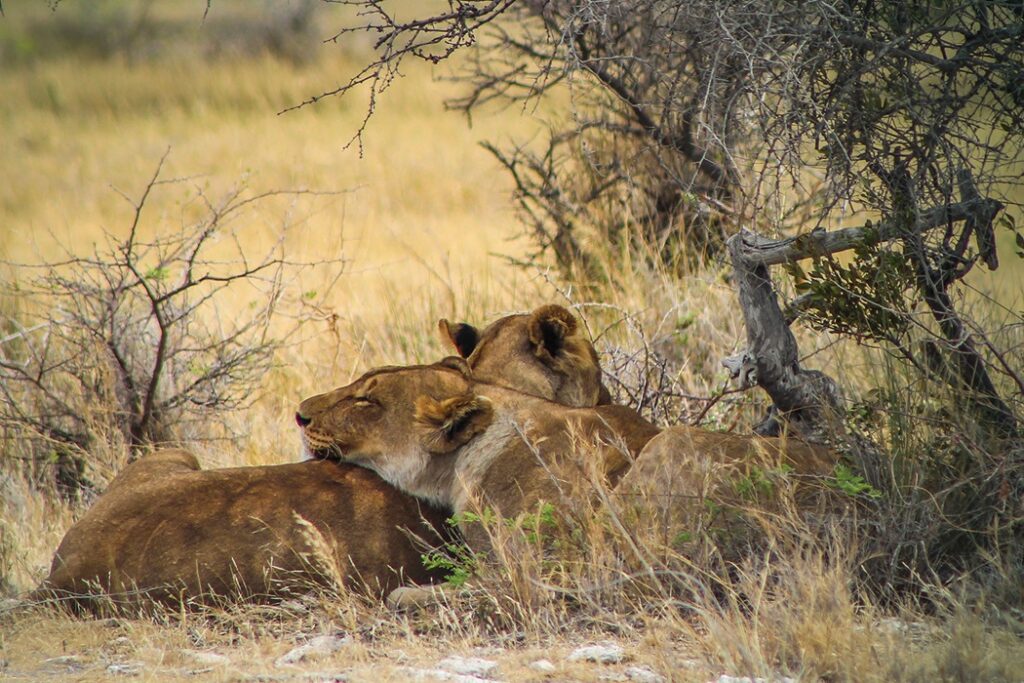
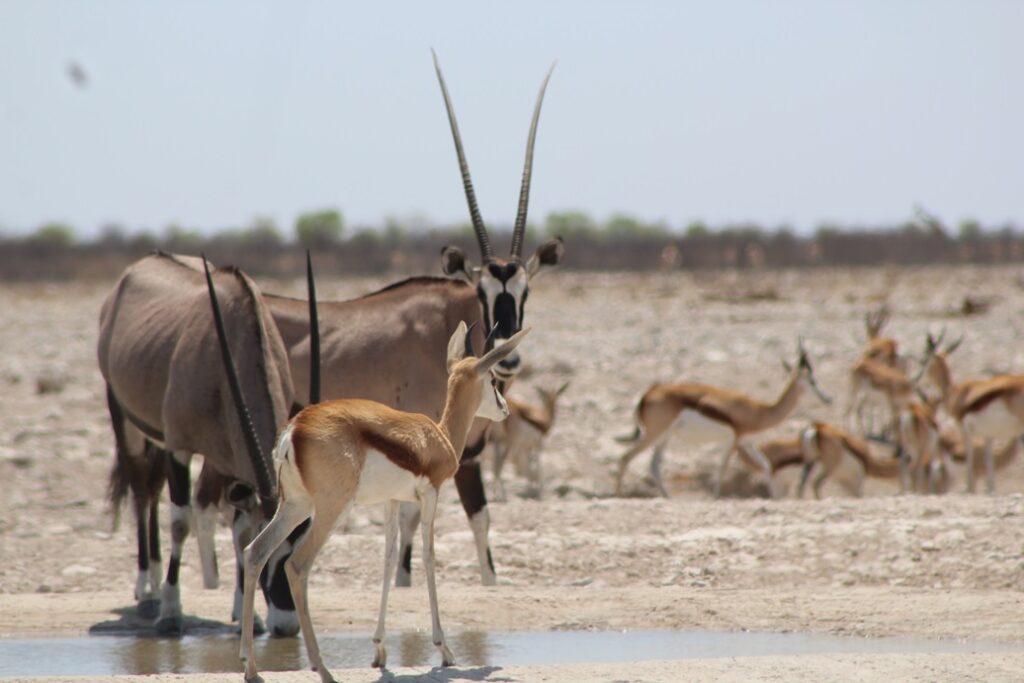
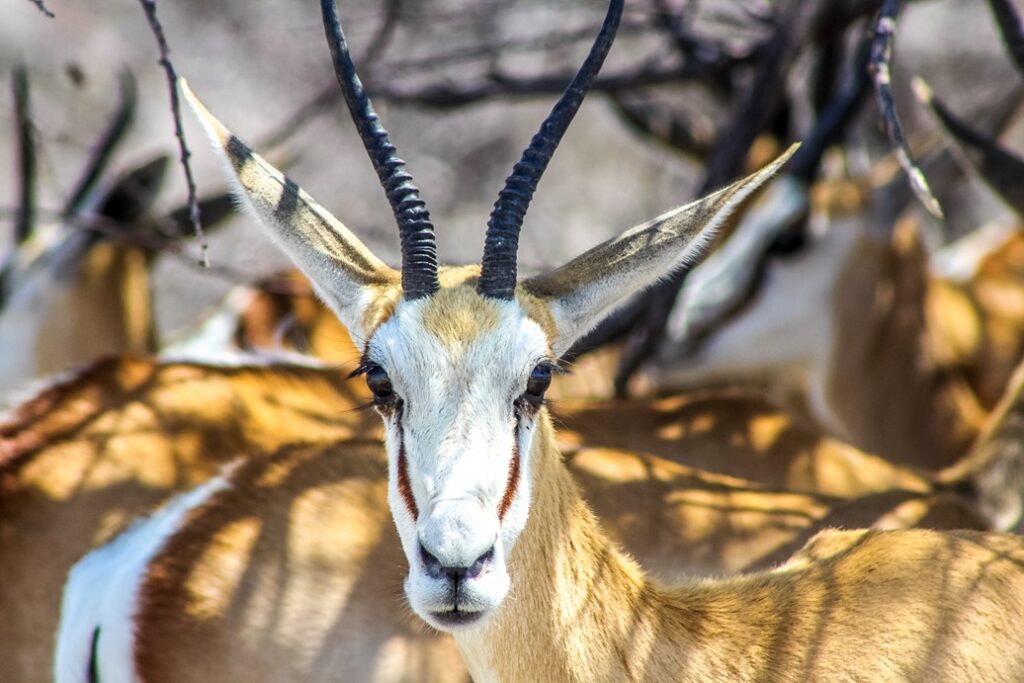
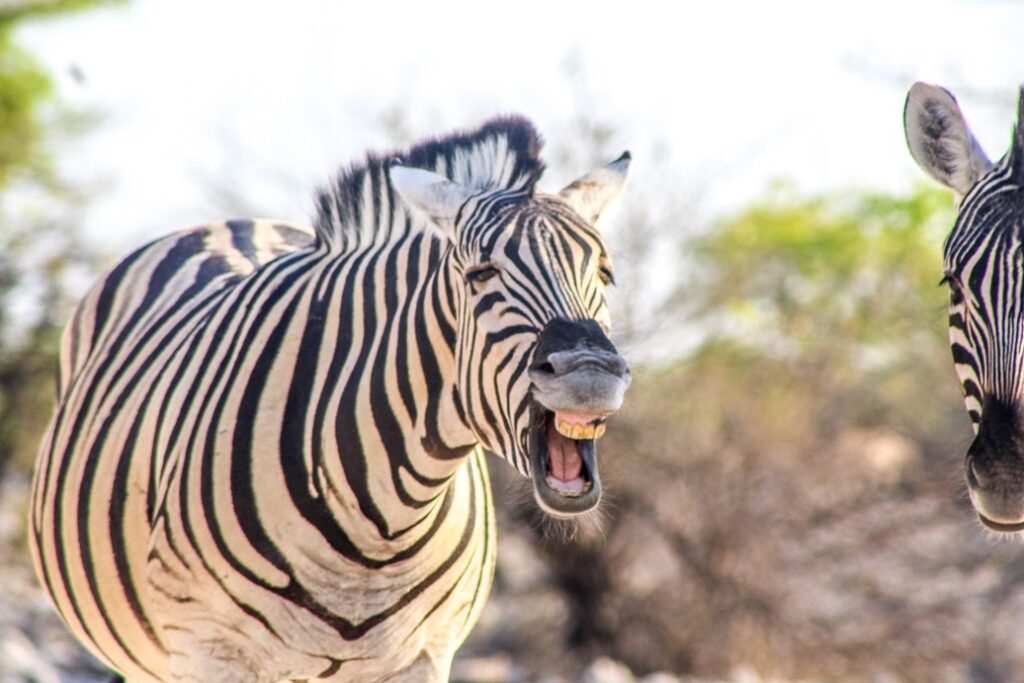
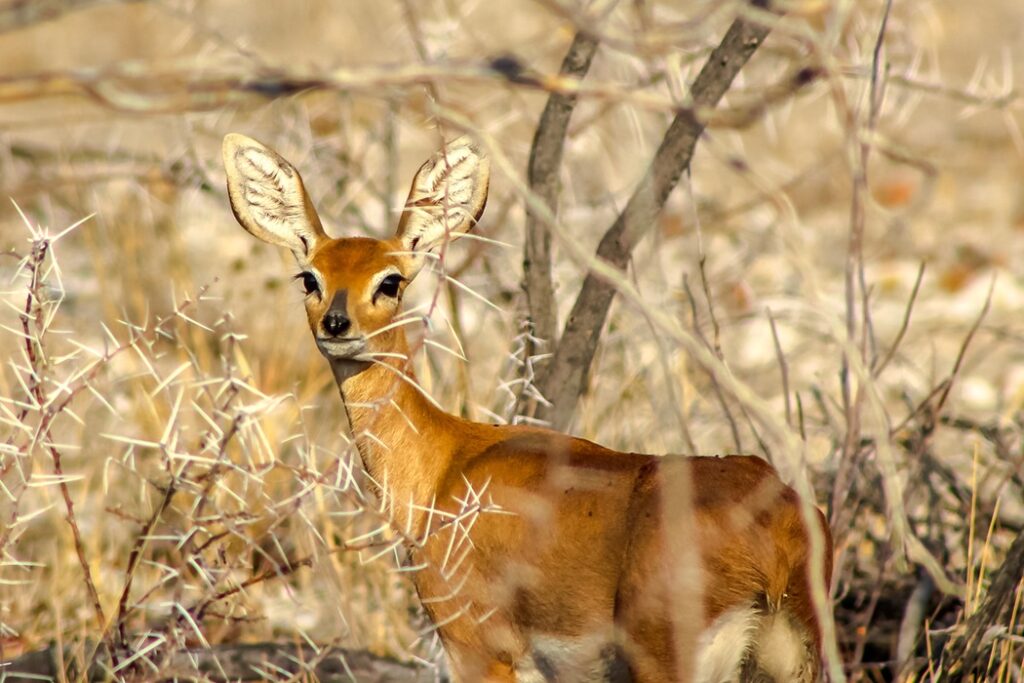
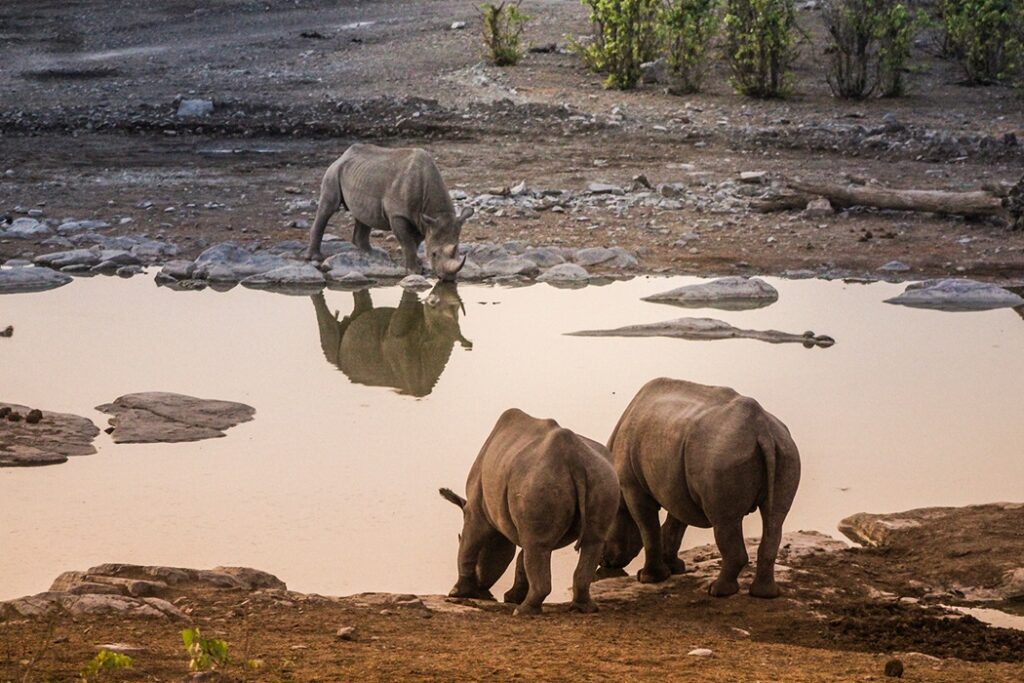
We loved spending hours watching a waterhole, catching a glimpse of a hyena hidden in the tall grass, finding ourselves 15 meters away from a family of elephants…
Moments that will remain engraved.
Entrance fee in 2024: 150 NAD/person (foreigner) + 50 NAD for the car, so 350 NAD/day for 2 persons + 1 vehicle, about 16.70 euros (see Etosha’s website).
9. The Caprivi Strip and the Okavango
At the very north of Namibia, there’s the Caprivi Strip. A strip of land that runs along the north of Botswana until it reaches Victoria Falls. We didn’t go all the way, just the very first part. Enough to see a change of scenery, greenery, and water!
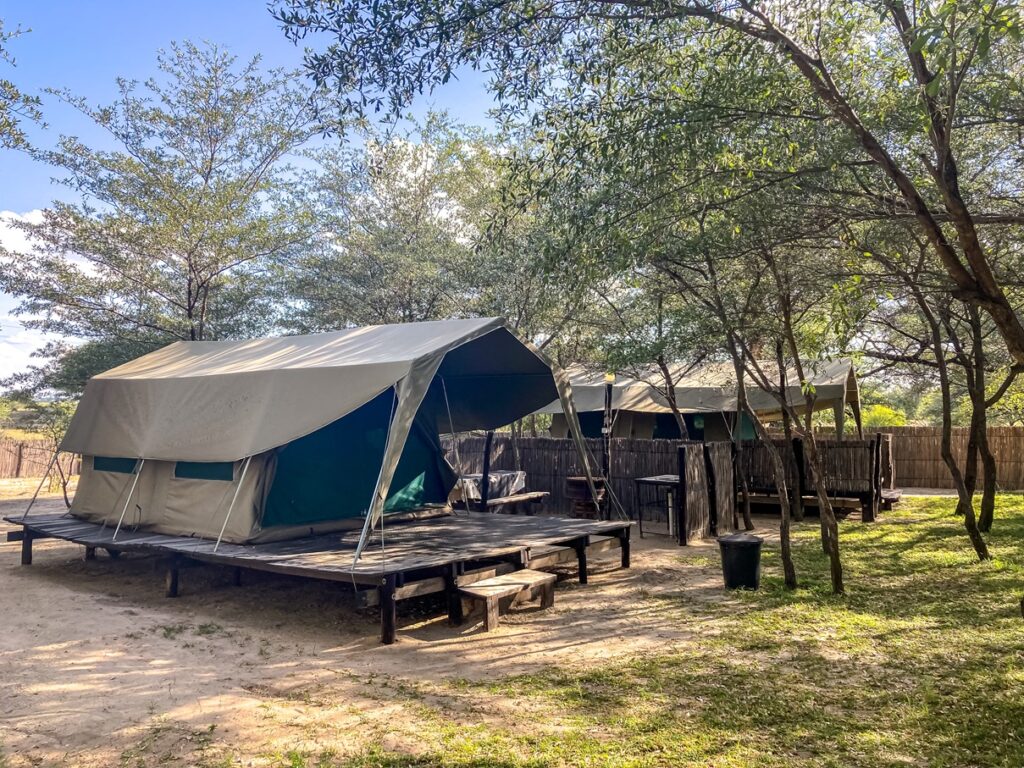
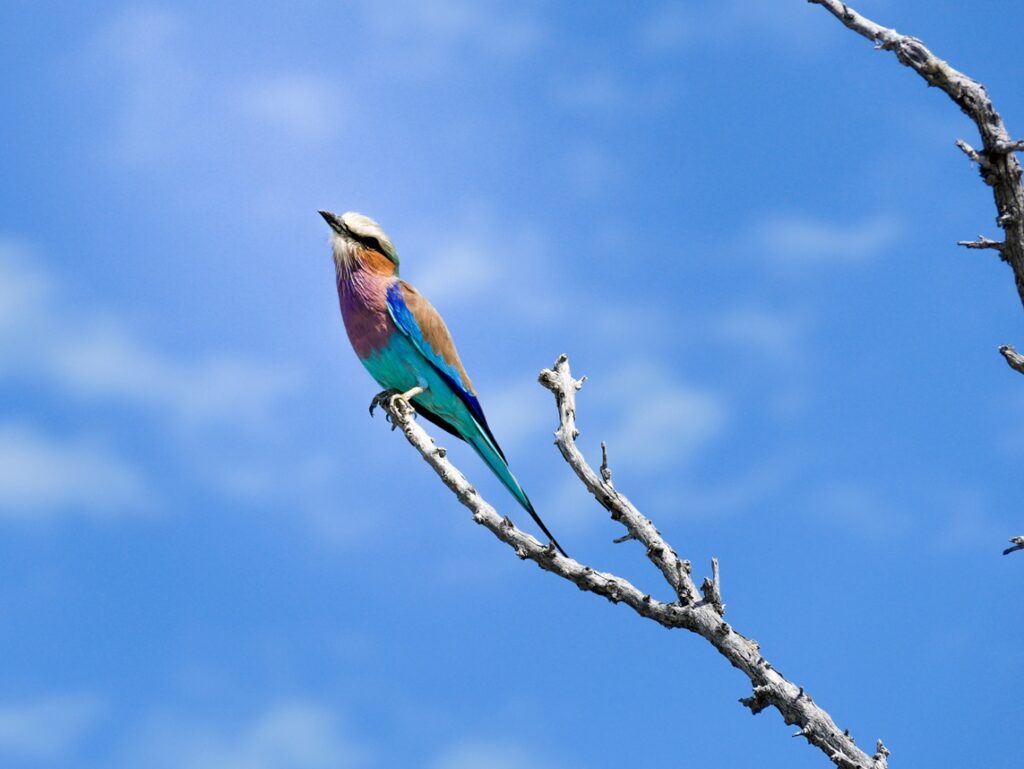
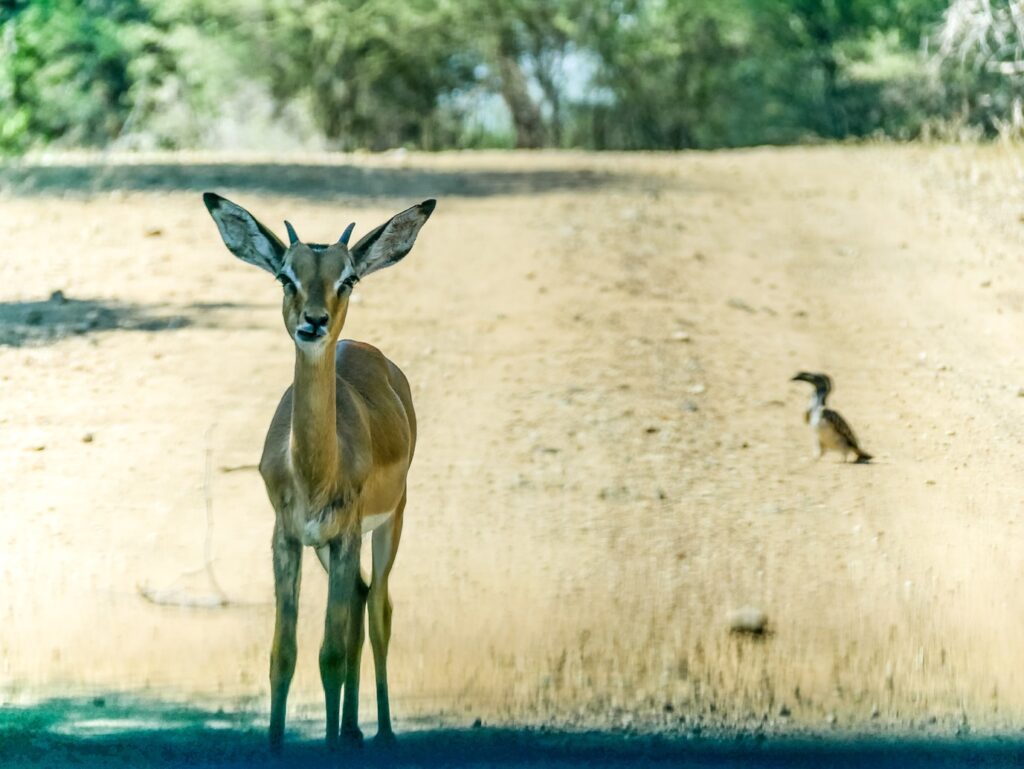
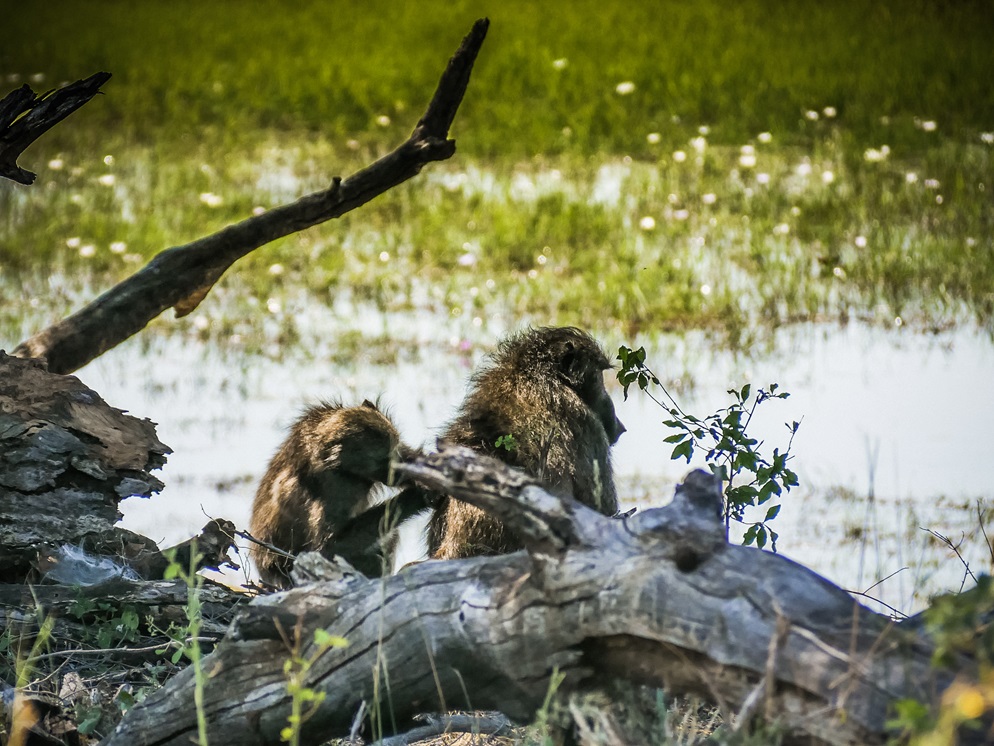
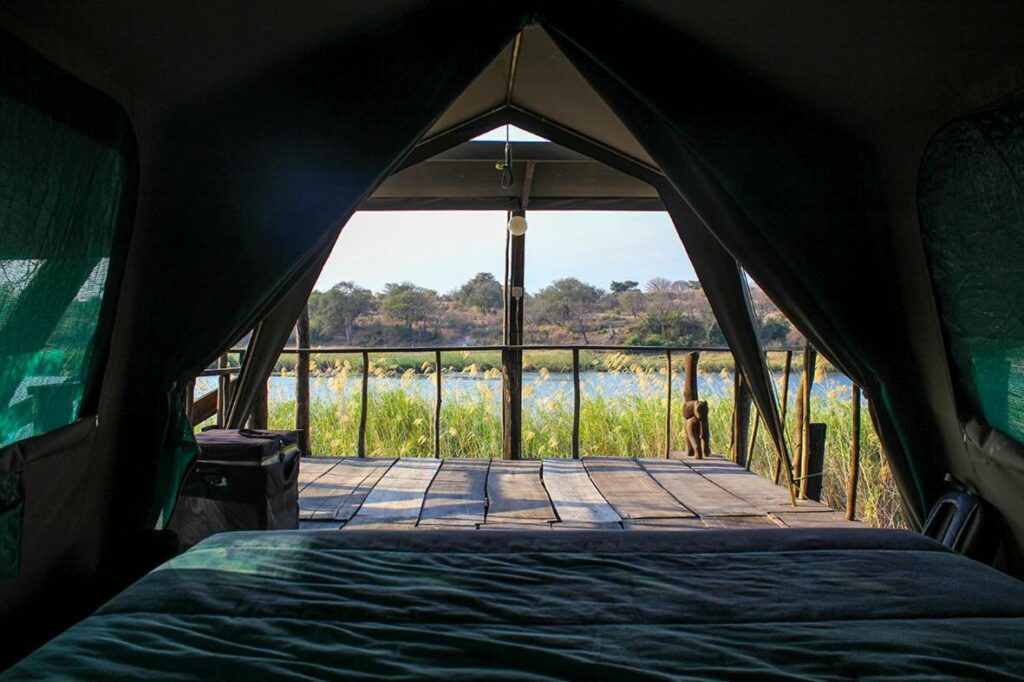
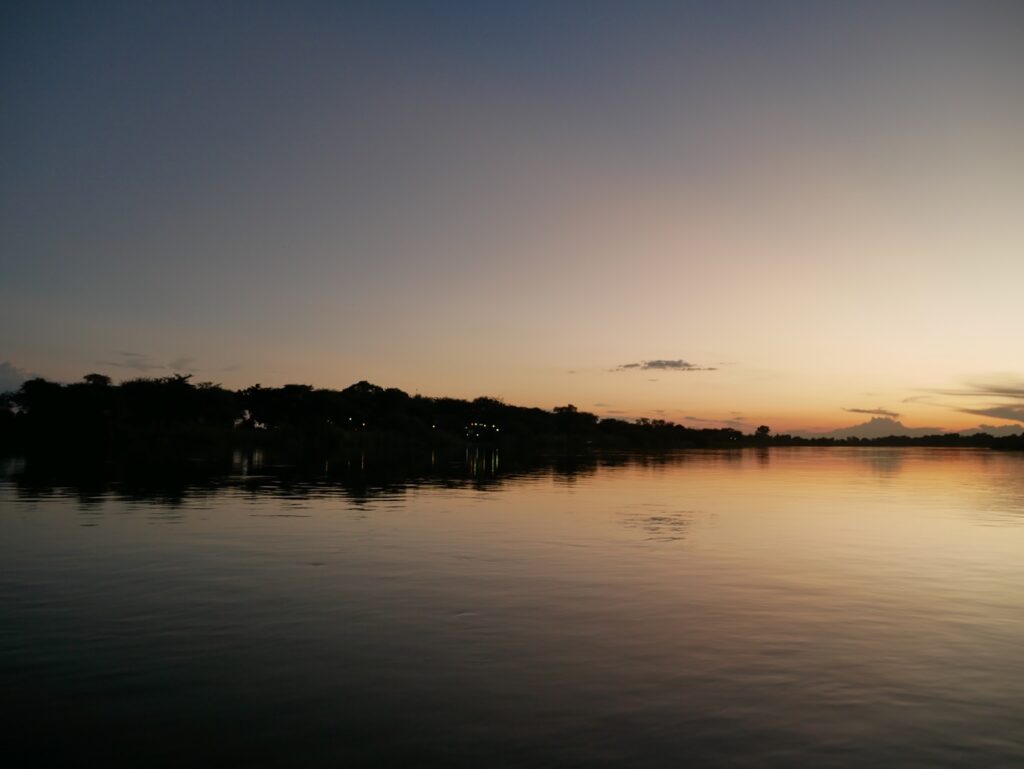
We camped along the Okavango River, which comes from Angola and goes to Botswana. Beautiful and lush landscapes and the possibility of seeing hippos in the river if you’re lucky. We took a boat trip on the river at sunset, beautiful.
Not far away, we visited the Bwabwata National Park, near Mahango. A day is enough and it’s worth a visit if you’re in the area.
10. Windhoek, the capital
It’s very rare to visit a country without going through its capital, so we spent a few days there even though we’re not very city-oriented. Windhoek is pronounced “Vinedouk” and means “the windy corner”! Perched at 1700 meters and benefiting from water, the city is quite green. There are few tall buildings, which we didn’t mind at all, far from it.
There are clearly several neighborhoods, downtown (mostly white), the Khomasdal district, and the Katutura township where most of Windhoek’s inhabitants live. We didn’t feel unsafe there, and we did everything on foot.
Trip in Namibia, visit Windhoëk:
- The independence museum (with statues and the memorial)
- The Lutheran Church of Christ
- Tintenpalast Gardens
- The Namibian Craft Center, where you can find traditional Namibian crafts.
- The Post Street Mall district and the Gibeon meteorite
- The Zoo park, but there are so many great safari to do in Namibia…
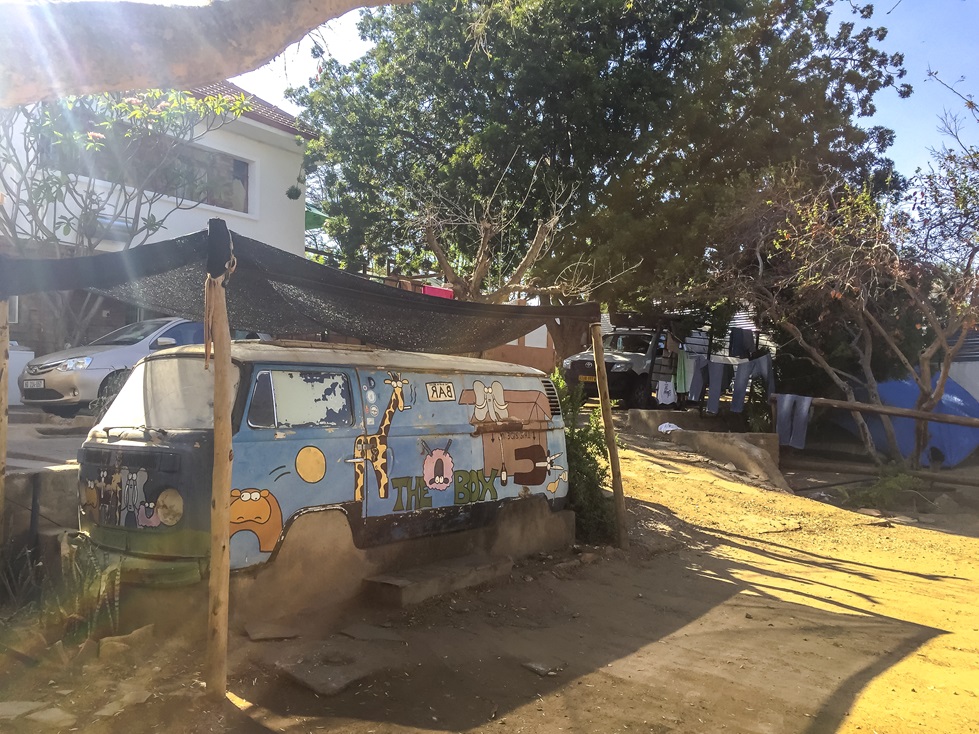
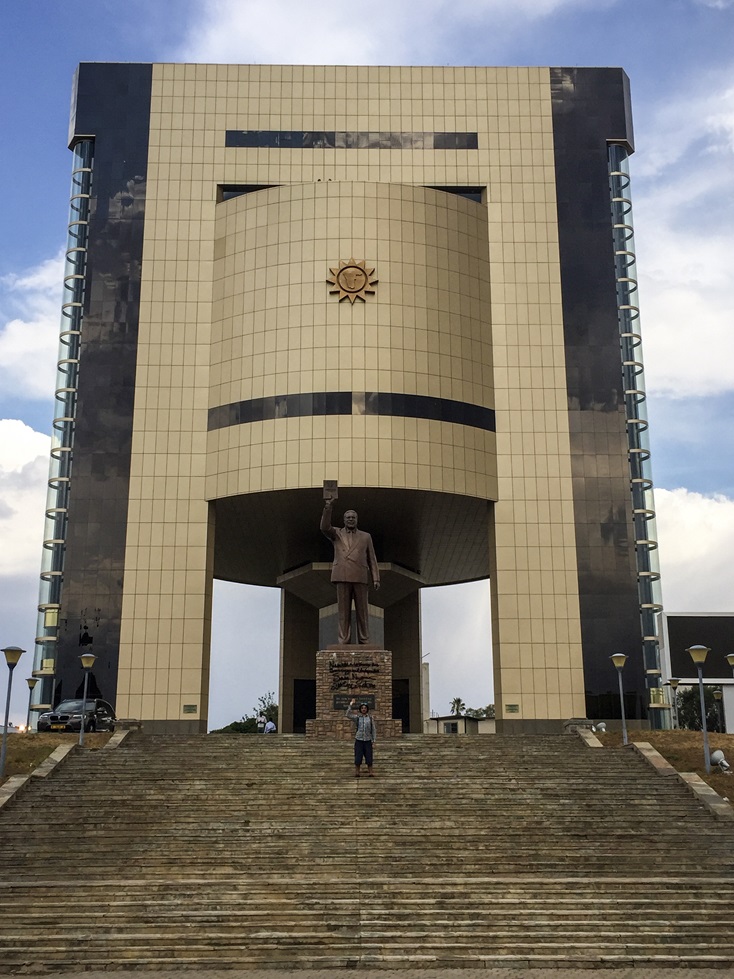
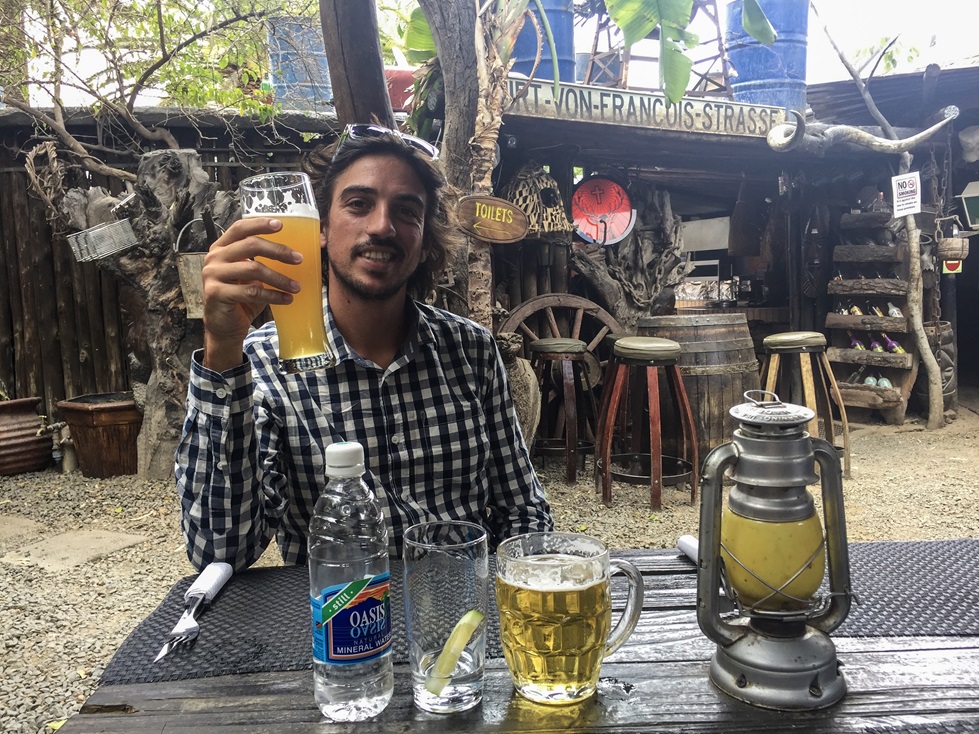
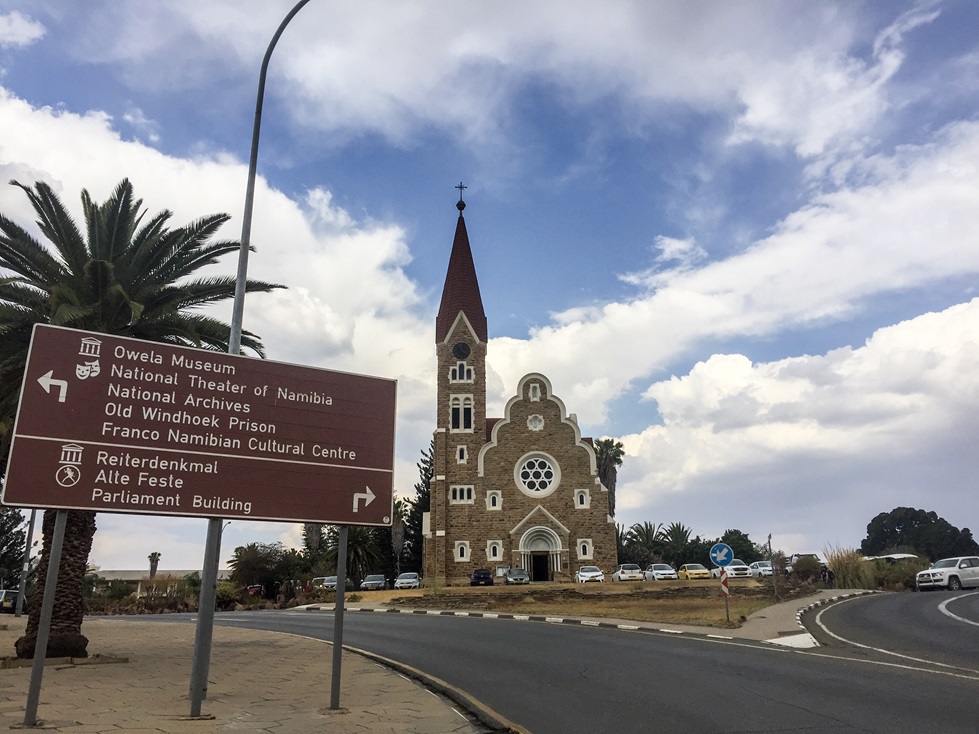
Useful information to prepare your trip in Namibia:
- Size: The country is large (824,292 km²) and the distances between cities are also considerable, so remember to regularly refuel even if you’ve done it 200 km ago.
- The official language is English, but there are several dialects. Germans and Dutch often understand the most spoken dialect there.
- Currency: the Namibian dollar, which is almost equal to the South African rand, and you can often pay in either currency (not in South Africa). 1 € = 20.90 rand (Feb. 2024).
- Border crossing: it’s a formality, but it can take time depending on the crowds. You need passports, to pay the border crossing fee, and if you have a rental car from South Africa, a “border crossing” (a letter from the lessor authorizing border crossing).
- Road conditions: classified from A to D, A for asphalt roads > D for roads mostly requiring a 4×4 but not always equivalent. We were able to drive on some D roads with our small car (at 10km/h while getting out of the car to remove large rocks), and sometimes it was impossible.
- Where to sleep: we mainly camped, but it’s easy to find hotels / Airbnb / hostels. We didn’t plan anything in advance (but we were in the off-peak tourist season).
- Camping: if you have camping equipment, campsites are the cheapest option (and for us, the most enjoyable). In general, you pay for a spot with: 1 power outlet, 1 bright spot, 1 BBQ area, shared sanitary block (shower and toilet), shared kitchen, and pool (to be checked case by case).
We hope this article will help you organize your future trip to Namibia!
Happy holidays!
Discover our other destinations, and of course, articles about our island, La Réunion.

Be First to Comment